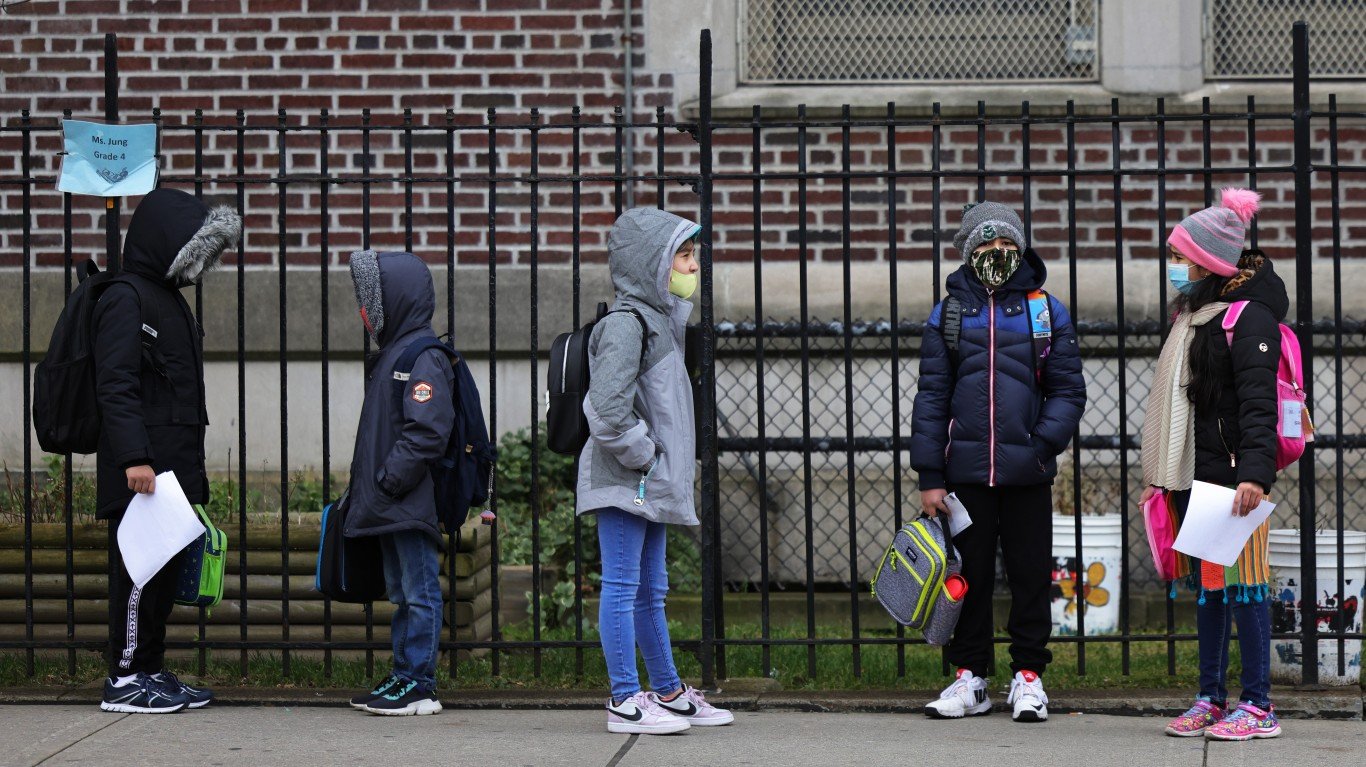

Many hoped the holidays would provide a respite from the unpredictability of schools’ schedules. Even after the winter break, if and how school can stay open changes almost on a daily basis.
24/7 Wall St. reviewed guidelines released by state governors and health and education departments as well as news articles to create a current list of school restrictions and re-closures in every state.
Daily temperature checks at the door, mask wearing, and staying socially distant were already the new normal for school kids. They have by now also become accustomed to sudden closures after students or staff tested positive for COVID-19.
However, since November, school closures have lasted more than a few days, with some moving to full-time online instruction even after the winter break. With the coronavirus pandemic still wreaking havoc on the U.S., switching to remote learning until further notice is increasingly an option. Teachers in some states are recommending that schools close for in person instruction and remain that way until the rest of the academic year.
The parameters for shutting down schools for in-person instruction are not uniform and are up to each school to determine. At the beginning of the school year, some schools decided to go fully remote only after one confirmed COVID-19 case. Later, school districts didn’t shut down a school until dozens of COVID-19 cases were confirmed. Now, some schools move to full-time remote learning just as a precaution if there is a rise in infections in the community.
Almost a year after the first case of coronavirus was confirmed in the U.S., the pandemic continues to spread across the country even as the COVID-19 vaccinations began nationwide. From Dec. 19 to Dec. 2020 — here is a timeline of coronavirus spread.
Click here to see how each state is managing schools amid the COVID-19 pandemic.
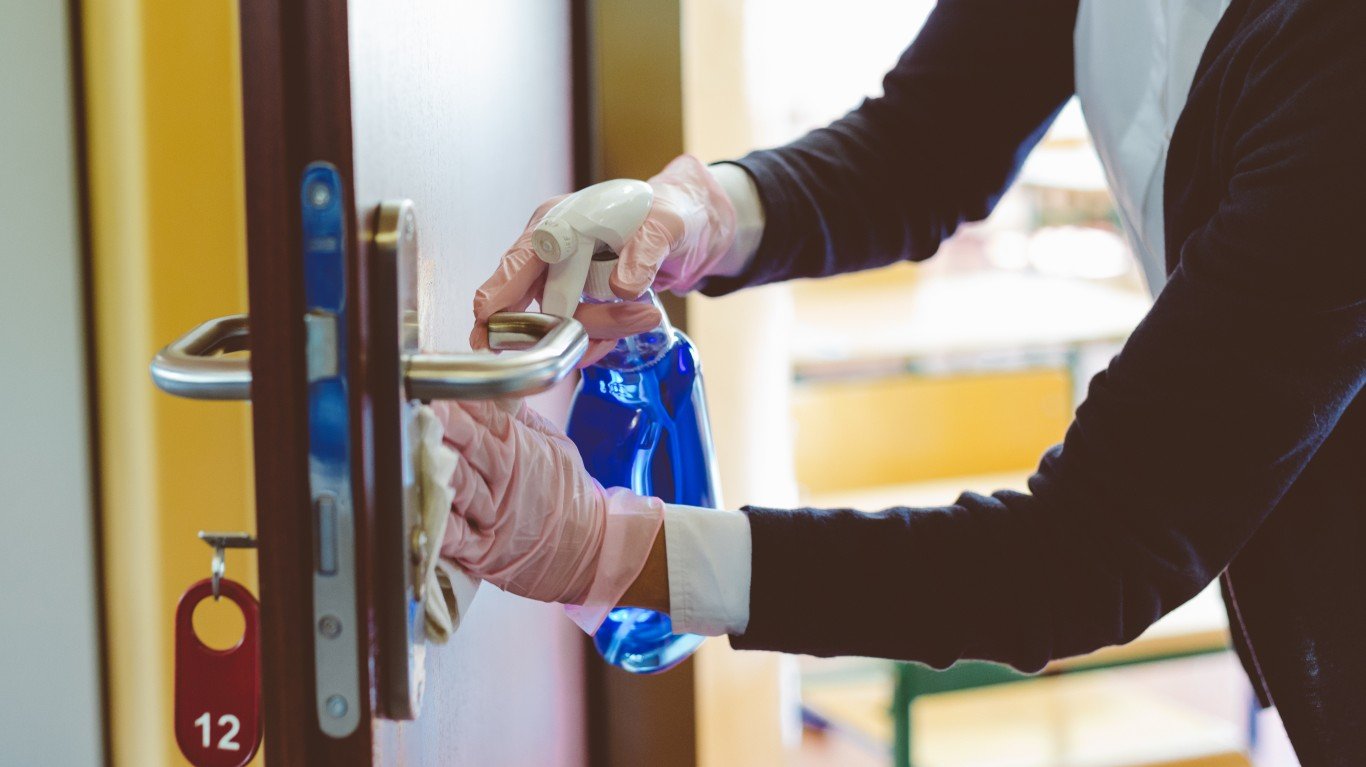
Alabama
> Re-closing schools: At least 3 counties are delaying the start of in-person instruction by a week after the second semester starts. Calhoun County Schools will be online full-time.
> Health screening recommendations: Daily temperature checks
> COVID-19 cases as of Jan 7: 7,860 per 100,000 people — 18th highest (total: 384,184)
> Change avg. daily cases, Dec 30 – Jan 6: 7.7% — 19th largest increase (from 356,820 to 384,184)
> Population: 4.9 million
[in-text-ad]
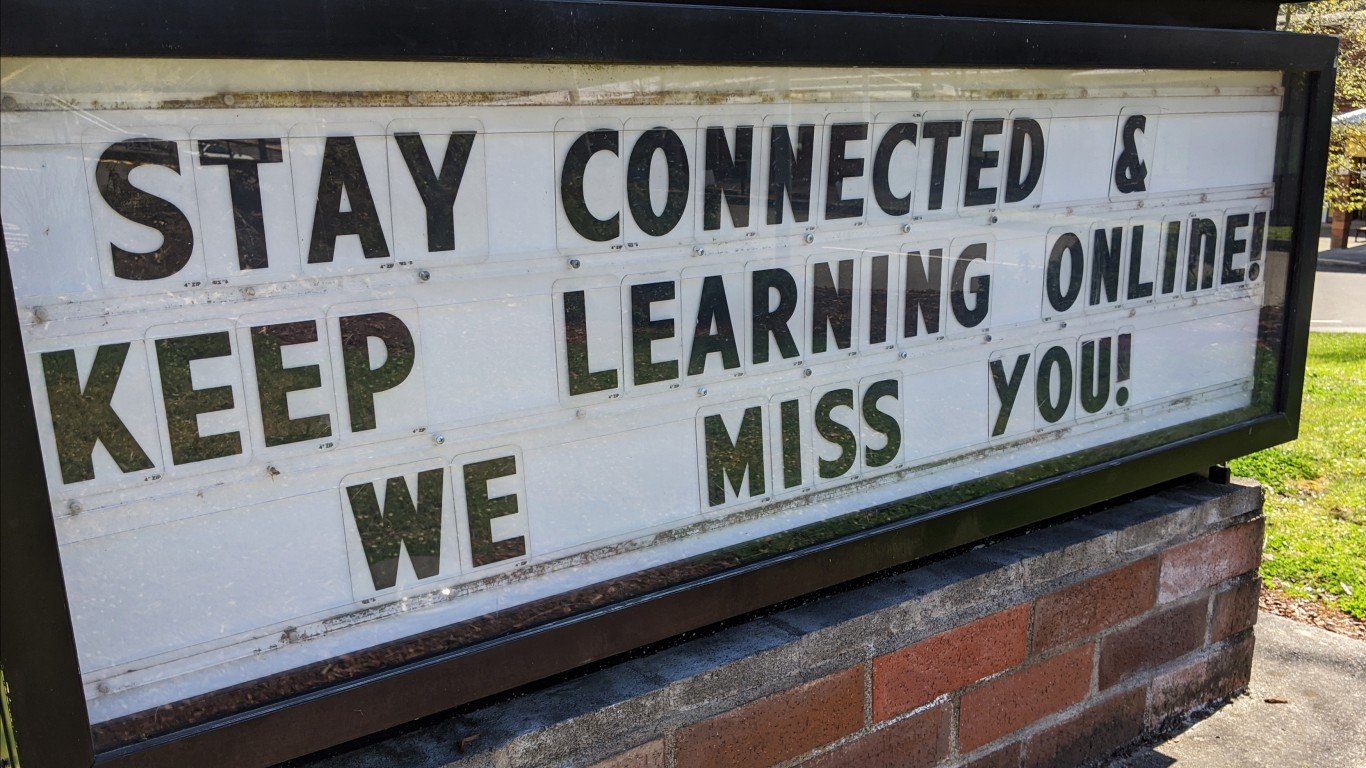
Alaska
> Re-closing schools: Anchorage School District delayed plans for in-person instruction, which was supposed to start in November, until further notice.
> Health screening recommendations: Daily temperature and symptom screening for all
> COVID-19 cases as of Jan 7: 6,631 per 100,000 people — 24th lowest (total: 48,899)
> Change avg. daily cases, Dec 30 – Jan 6: 5.2% — 15th smallest increase (from 46,483 to 48,899)
> Population: 737,000
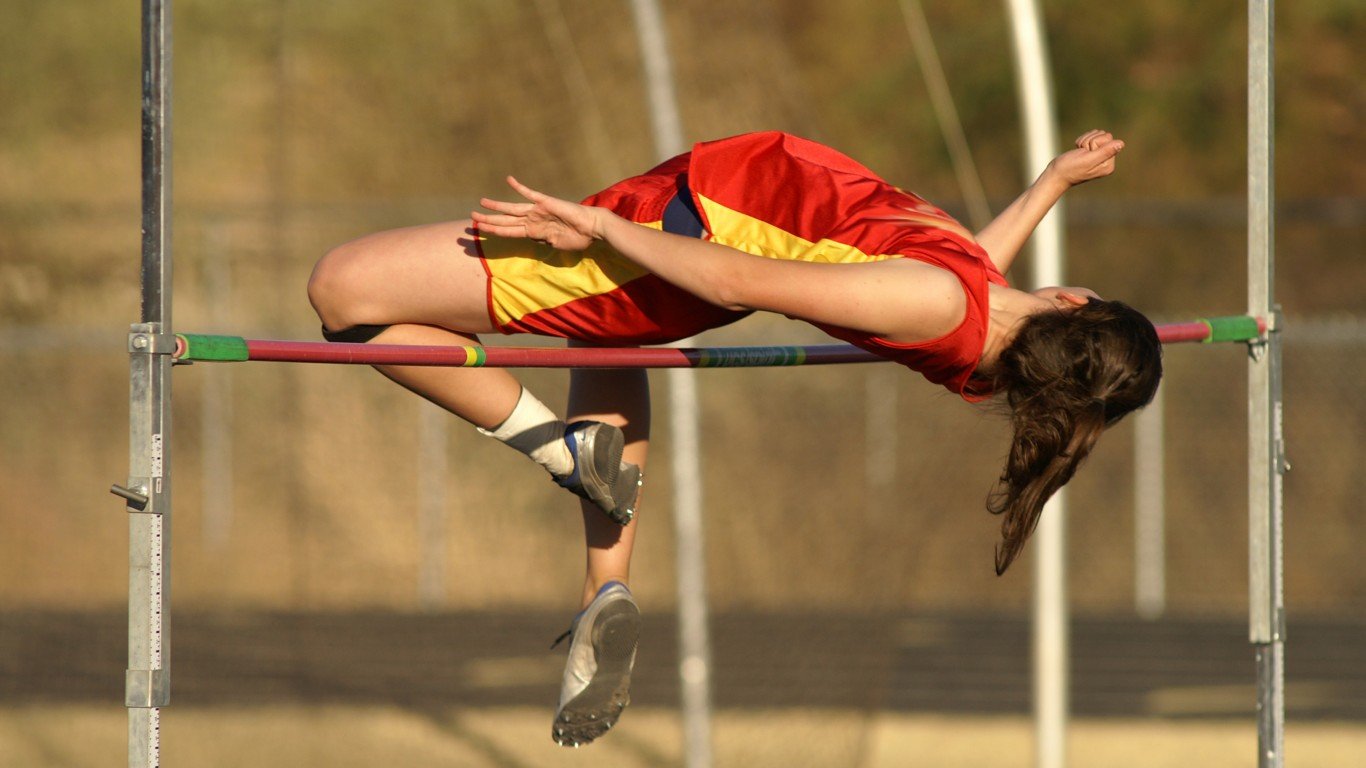
Arizona
> Re-closing schools: Mesa Public Schools, the largest public school district in Arizona, moved to remote learning at the beginning of the spring semester. All schools in Balsz Elementary School District remain closed.
> Health screening recommendations: Daily symptom screening and temperature checks
> COVID-19 cases as of Jan 7: 8,151 per 100,000 people — 11th highest (total: 584,593)
> Change avg. daily cases, Dec 30 – Jan 6: 12.1% — 4th largest increase (from 512,489 to 574,680)
> Population: 7.2 million

Arkansas
> Re-closing schools: At least 113 schools are in communities with high COVID-19 spread. Dozens of schools have moved to remote learning. At least one school in the Earle School District closed indefinitely, classes were moved online.
> Health screening recommendations: To have screening stations and screening signs
> COVID-19 cases as of Jan 7: 8,049 per 100,000 people — 13th highest (total: 242,593)
> Change avg. daily cases, Dec 30 – Jan 6: 7.4% — 25th largest increase (from 222,430 to 238,888)
> Population: 3.0 million
[in-text-ad-2]
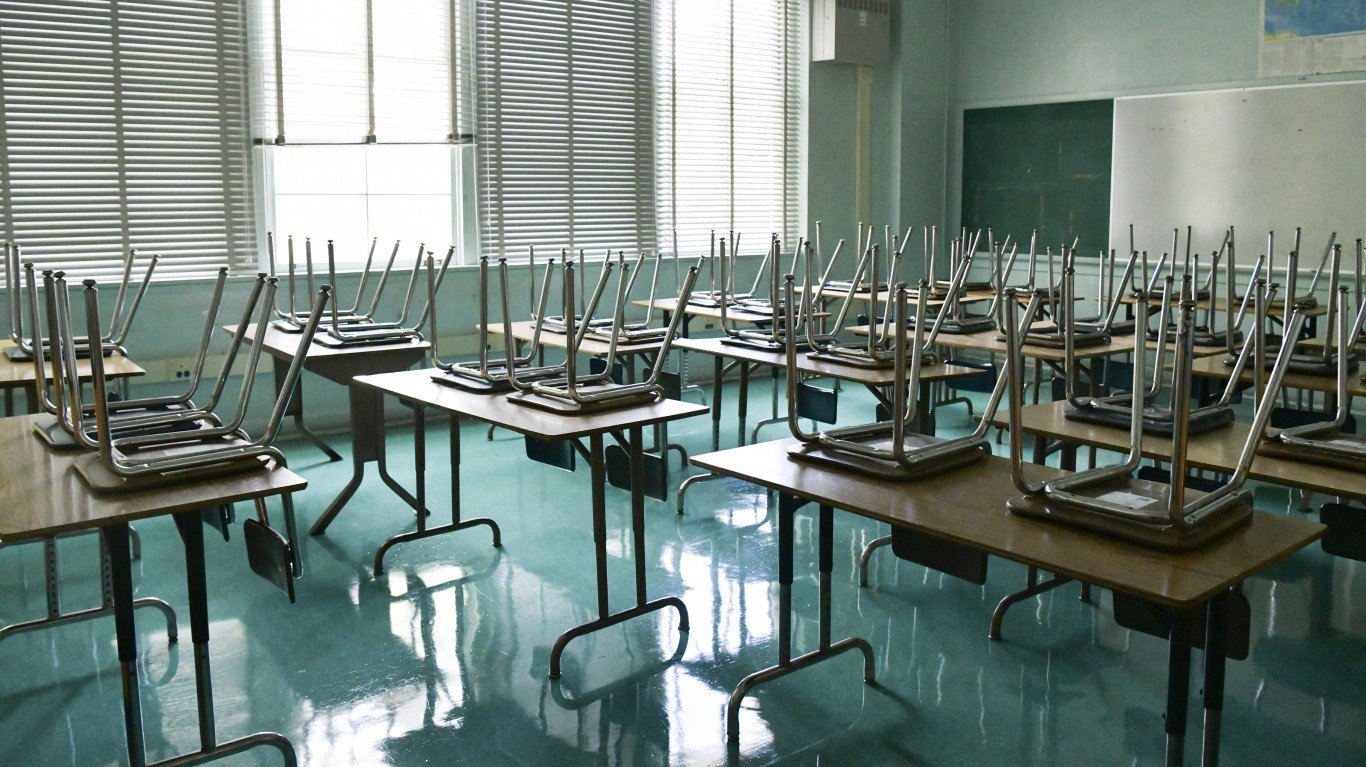
California
> Re-closing schools: 54 counties, which have 99.67% of K-12 students are in the purple “widespread” tier and can’t begin offering in-person instruction. Schools are required to close when at least 5% of staff and students test positive for Covid-19 within a 14-day period.
> Health screening recommendations: Daily symptom screening and temperature checks, hand-washing required before entering school
> COVID-19 cases as of Jan 7: 6,275 per 100,000 people — 18th lowest (total: 2,482,226)
> Change avg. daily cases, Dec 30 – Jan 6: 11.9% — 6th largest increase (from 2,218,142 to 2,482,226)
> Population: 39.6 million
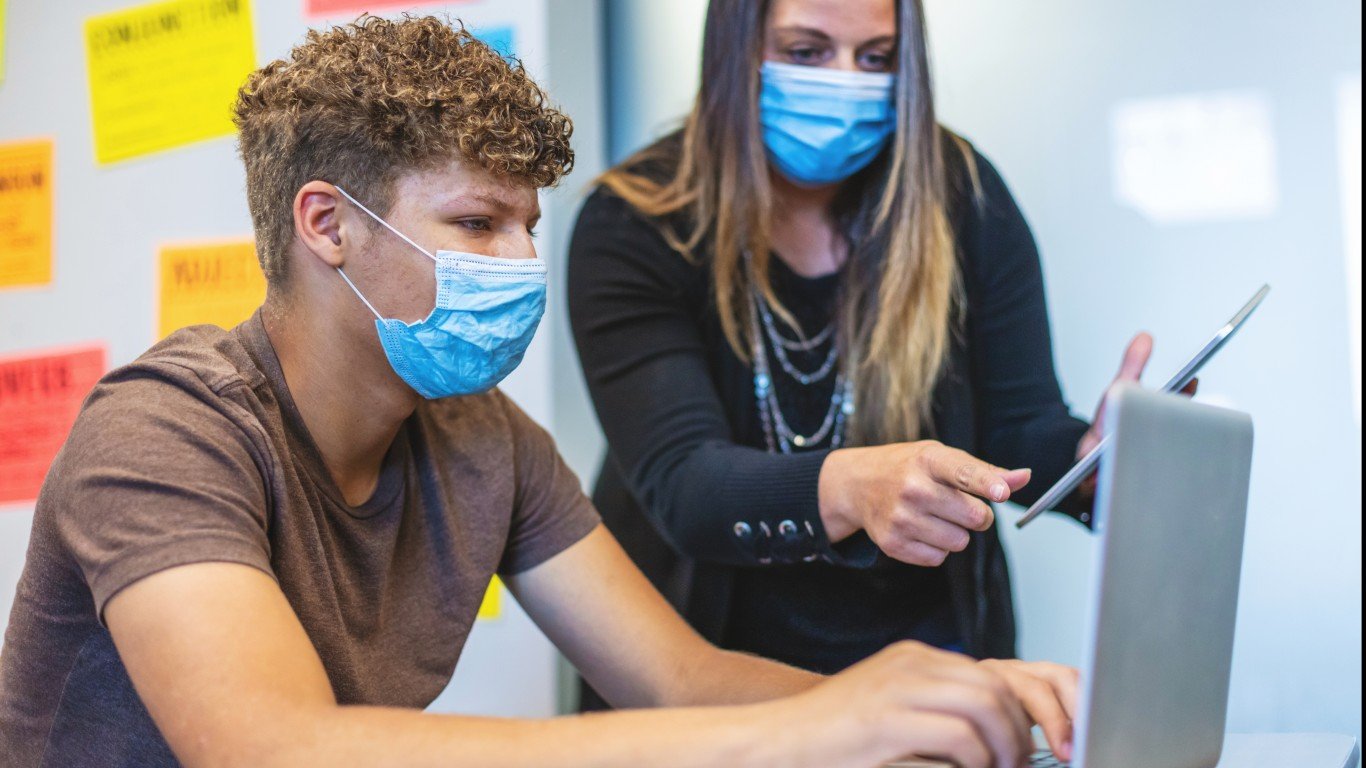
Colorado
> Re-closing schools: Many of the biggest school districts in Colorado are fully remote. Public schools in Denver started the spring semester remotely, planning to phase kids back into classrooms by Feb 1.
> Health screening recommendations: At-home or on-site symptom screening and temperature checks
> COVID-19 cases as of Jan 7: 6,135 per 100,000 people — 17th lowest (total: 349,450)
> Change avg. daily cases, Dec 30 – Jan 6: 4.8% — 12th smallest increase (from 330,859 to 346,893)
> Population: 5.7 million
[in-text-ad]
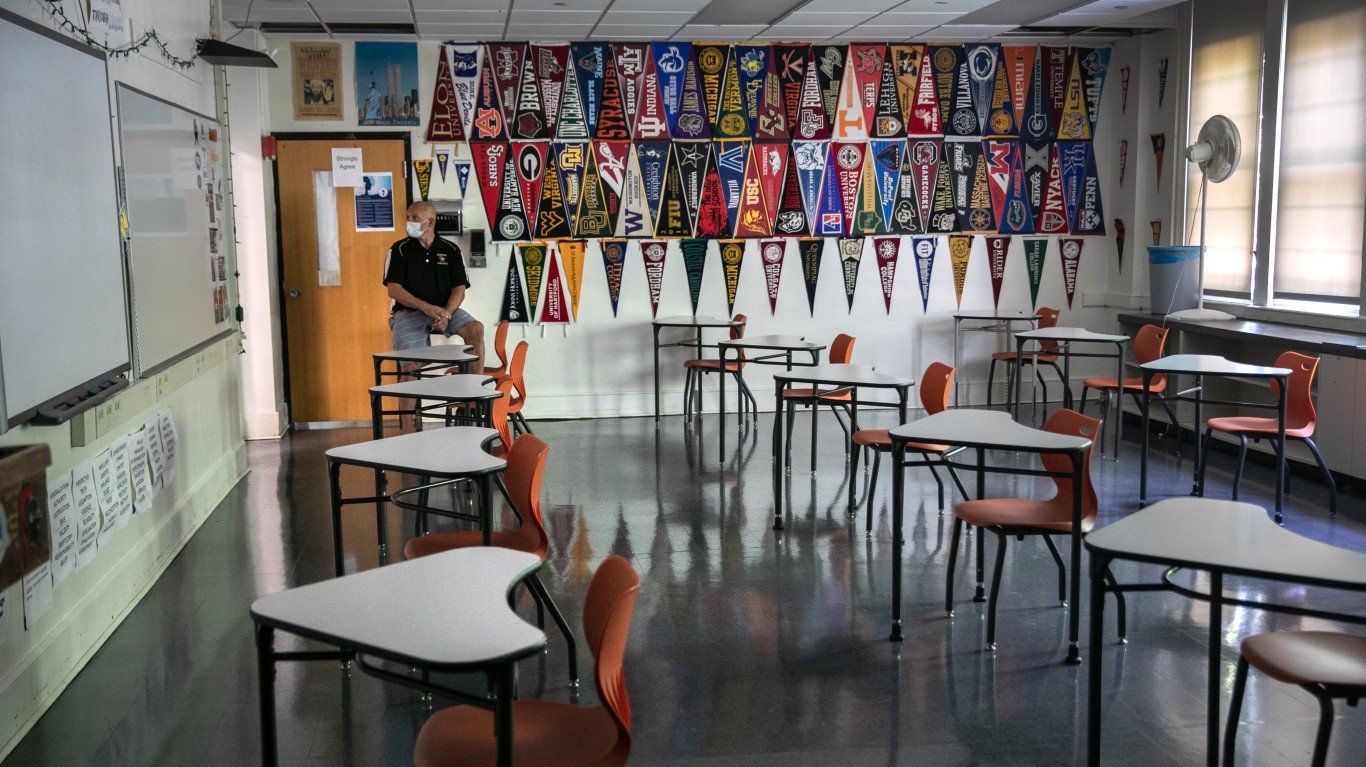
Connecticut
> Re-closing schools: All Bristol schools transitioned to full distance learning. At least 7 school districts switched to fully remote until mid-January. Schools are advised to close if they are in an area with an average of 25+ new cases per 100K residents in a week.
> Health screening recommendations: To maximize social distancing and for students to bring their own water
> COVID-19 cases as of Jan 7: 5,583 per 100,000 people — 13th lowest (total: 199,454)
> Change avg. daily cases, Dec 30 – Jan 6: 8.6% — 13th largest increase (from 183,663 to 199,454)
> Population: 3.6 million
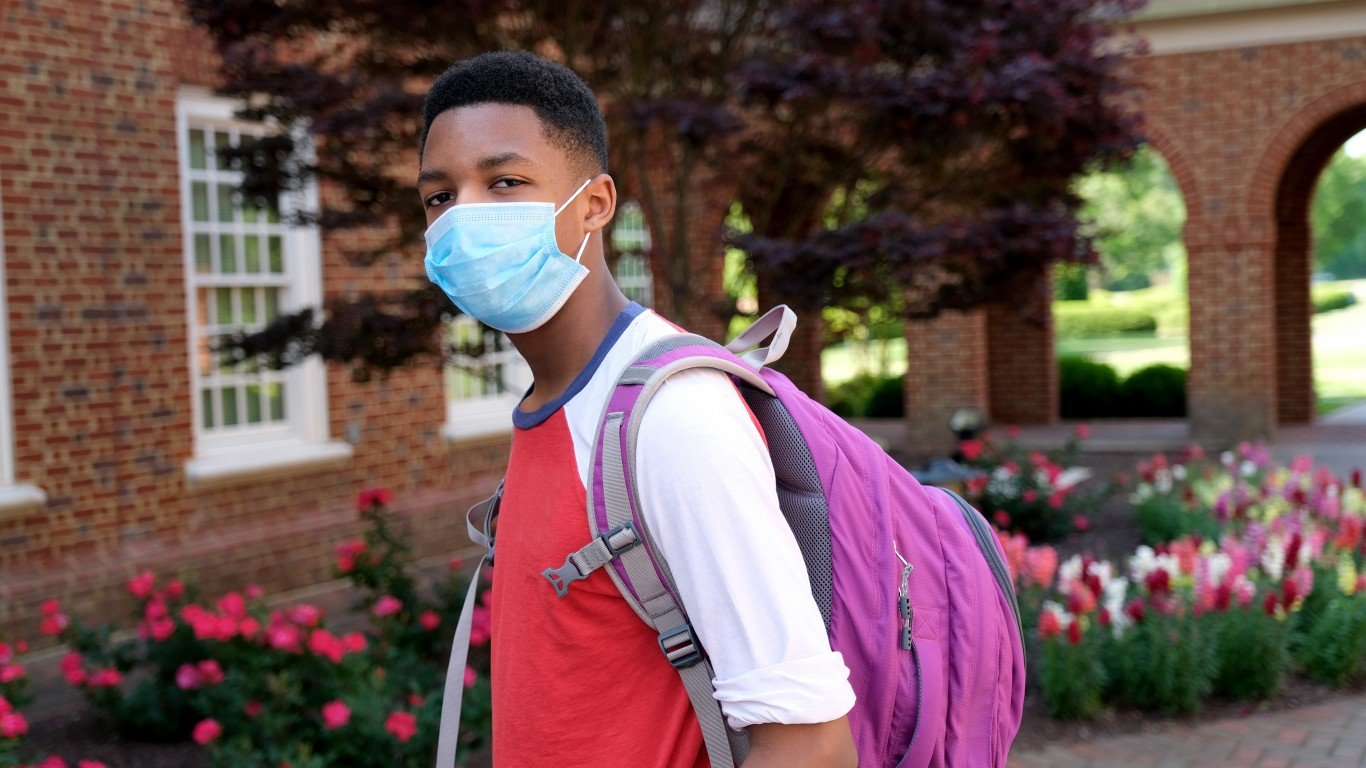
Delaware
> Re-closing schools: Most schools pause in-person learning until Jan. 8. Hybrid learning will return on Jan. 11. Sports competitions have been canceled.
> Health screening recommendations: Daily symptom screening and temperature checks at home. The state will provide testing for staff and students
> COVID-19 cases as of Jan 7: 6,509 per 100,000 people — 23rd lowest (total: 62,949)
> Change avg. daily cases, Dec 30 – Jan 6: 9.1% — 12th largest increase (from 56,596 to 61,729)
> Population: 967,000
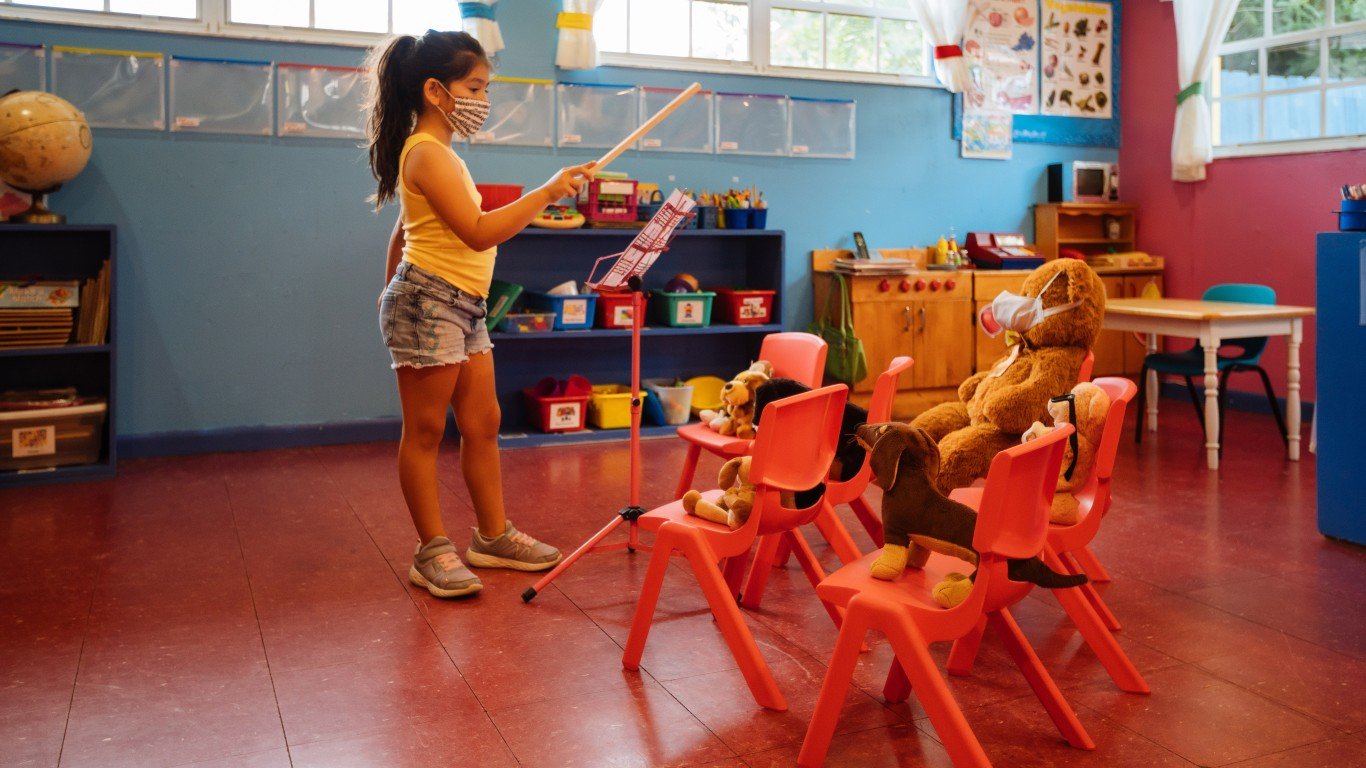
Florida
> Re-closing schools: Some Florida schools went fully remote for 2 weeks following the Christmas and New Year break. A new executive order has been issued extending remote and hybrid learning options.
> Health screening recommendations: To set up secondary clinic for kids showing symptoms
> COVID-19 cases as of Jan 7: 6,713 per 100,000 people — 25th highest (total: 1,429,722)
> Change avg. daily cases, Dec 30 – Jan 6: 7.9% — 18th largest increase (from 1,306,123 to 1,409,906)
> Population: 21.3 million
[in-text-ad-2]
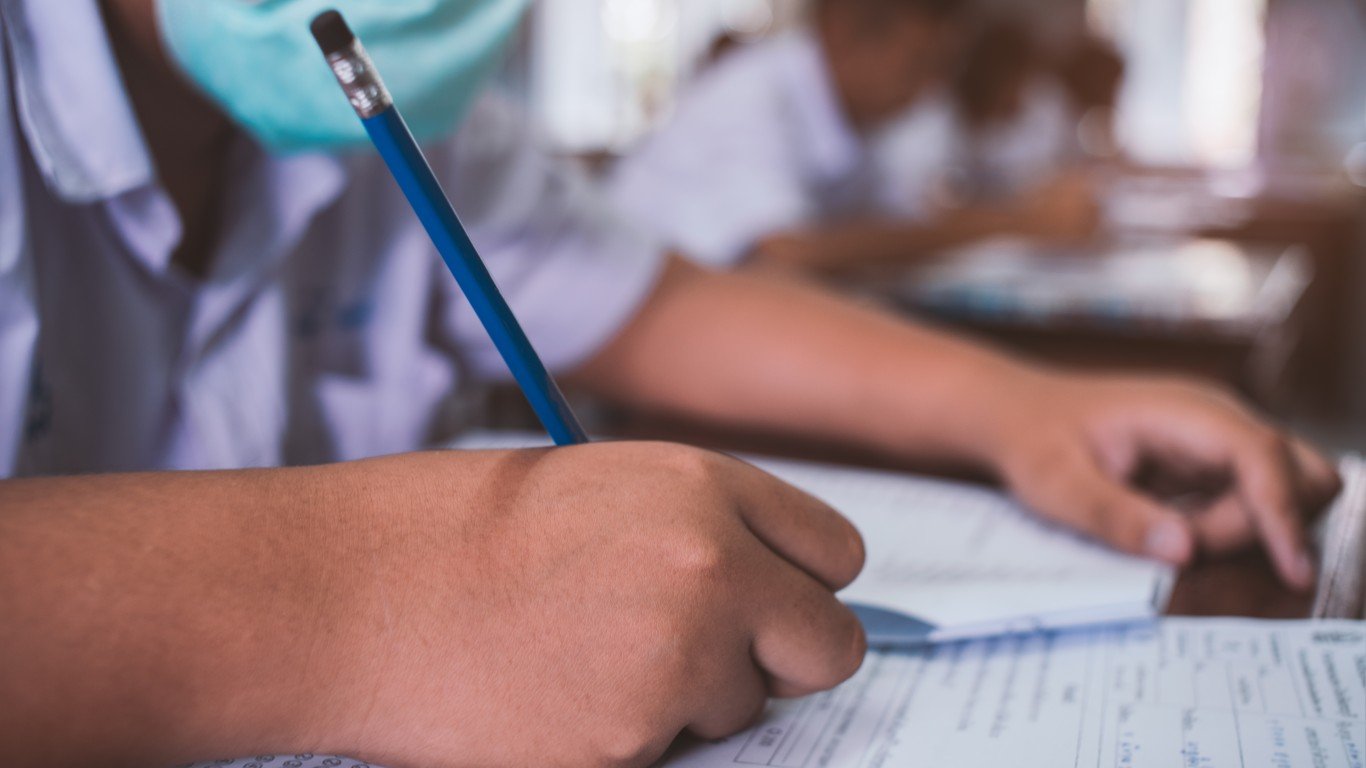
Georgia
> Re-closing schools: Scattered school closures have happened all over the state. Windsor Forest High School in Chatham County is among the latest to shut down until Jan. 11. Ware County Schools closed early for the holidays.
> Health screening recommendations: Daily temperature checks for all
> COVID-19 cases as of Jan 7: 5,798 per 100,000 people — 15th lowest (total: 609,868)
> Change avg. daily cases, Dec 30 – Jan 6: 8.0% — 17th largest increase (from 558,177 to 602,796)
> Population: 10.5 million
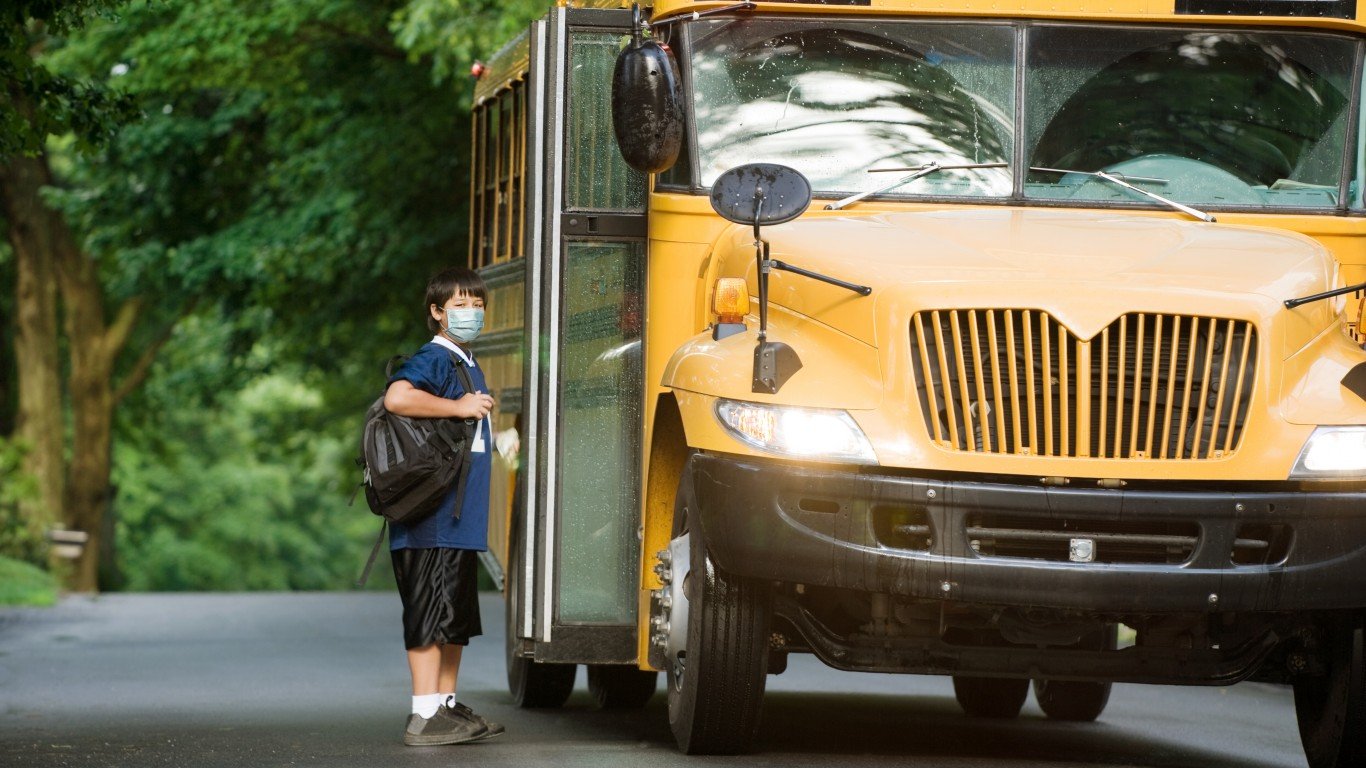
Hawaii
> Re-closing schools: Some schools are extending the first phase of reopening for in-person instruction, which consists of half-day classes for vulnerable students.
> Health screening recommendations: Daily symptom screenings
> COVID-19 cases as of Jan 7: 1,571 per 100,000 people — 2nd lowest (total: 22,310)
> Change avg. daily cases, Dec 30 – Jan 6: 5.2% — 14th smallest increase (from 21,209 to 22,310)
> Population: 1.4 million
[in-text-ad]

Idaho
> Re-closing schools: All schools in Boise School District went fully remote after Thanksgiving break. The Emmett School District now requires all students and staff to wear masks.
> Health screening recommendations: Daily symptom screening and temperature checks for all
> COVID-19 cases as of Jan 7: 8,329 per 100,000 people — 9th highest (total: 146,106)
> Change avg. daily cases, Dec 30 – Jan 6: 4.5% — 10th smallest increase (from 139,864 to 146,106)
> Population: 1.8 million
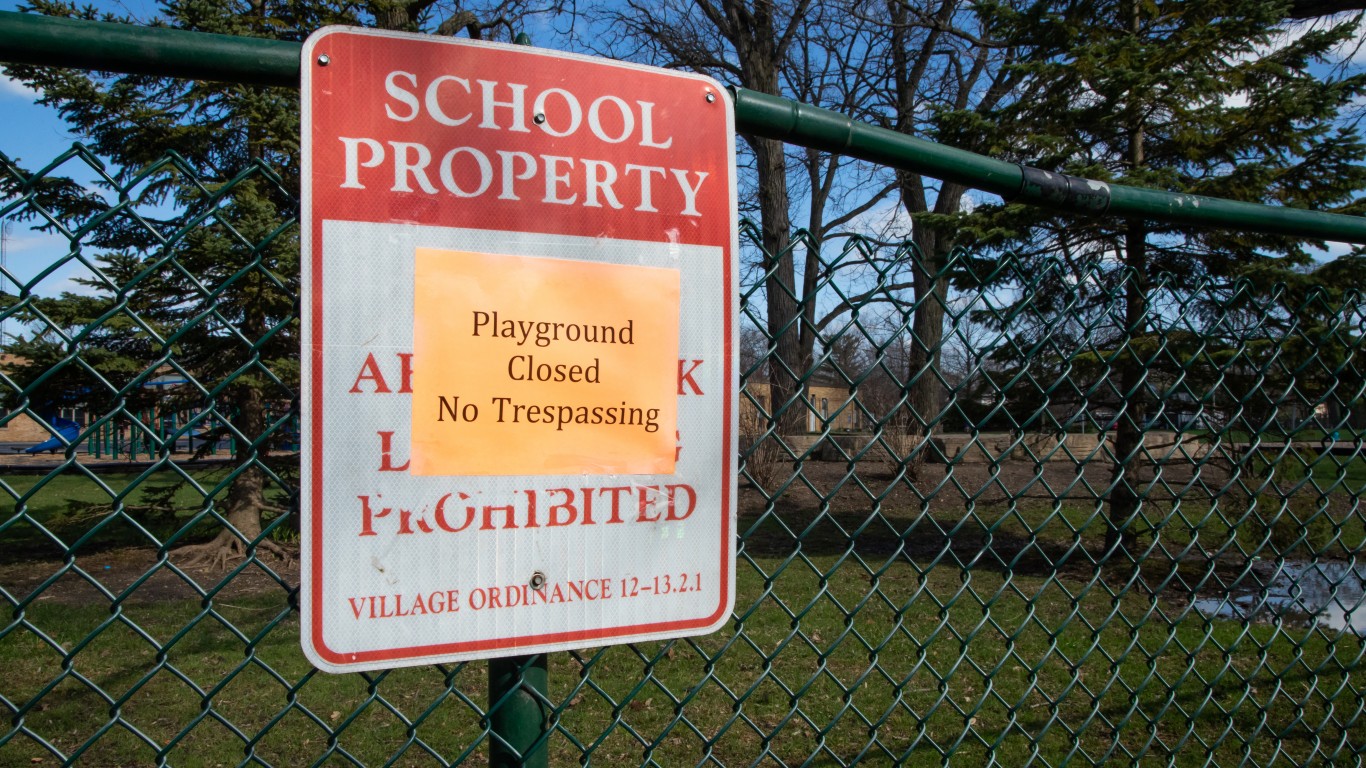
Illinois
> Re-closing schools: Chicago Public Schools will return to in-person learning on Jan 11, but high school students will continue remote. Catholic schools now have the option to transition to remote learning.
> Health screening recommendations: Daily symptom screenings and temperature checks for all
> COVID-19 cases as of Jan 7: 7,912 per 100,000 people — 17th highest (total: 1,008,045)
> Change avg. daily cases, Dec 30 – Jan 6: 4.6% — 11th smallest increase (from 955,380 to 999,288)
> Population: 12.7 million
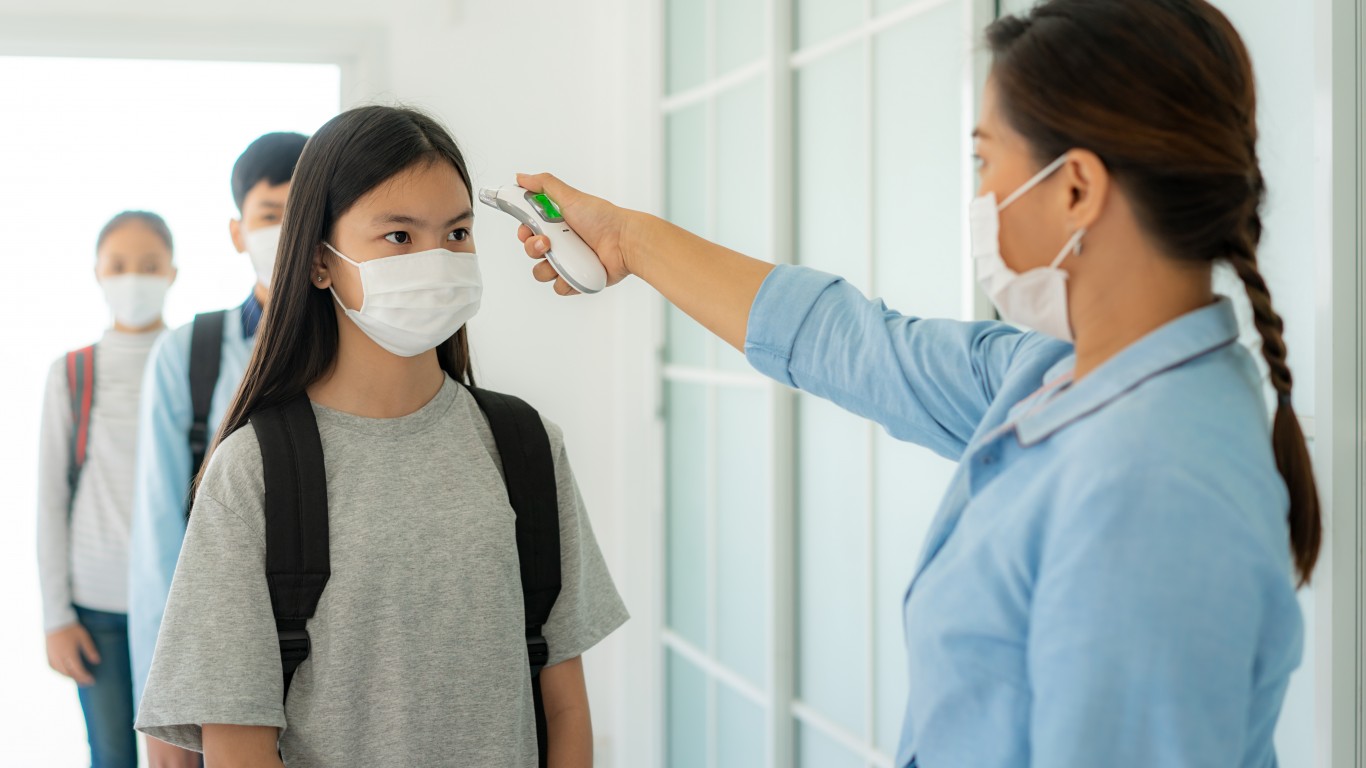
Indiana
> Re-closing schools: All schools in Marion County went fully remote until mid-January. About half of school districts in Indiana have moved to full-time virtual learning for various periods of time.
> Health screening recommendations: Daily temperature checks
> COVID-19 cases as of Jan 7: 8,167 per 100,000 people — 10th highest (total: 546,499)
> Change avg. daily cases, Dec 30 – Jan 6: 6.8% — 20th smallest increase (from 505,017 to 539,229)
> Population: 6.7 million
[in-text-ad-2]
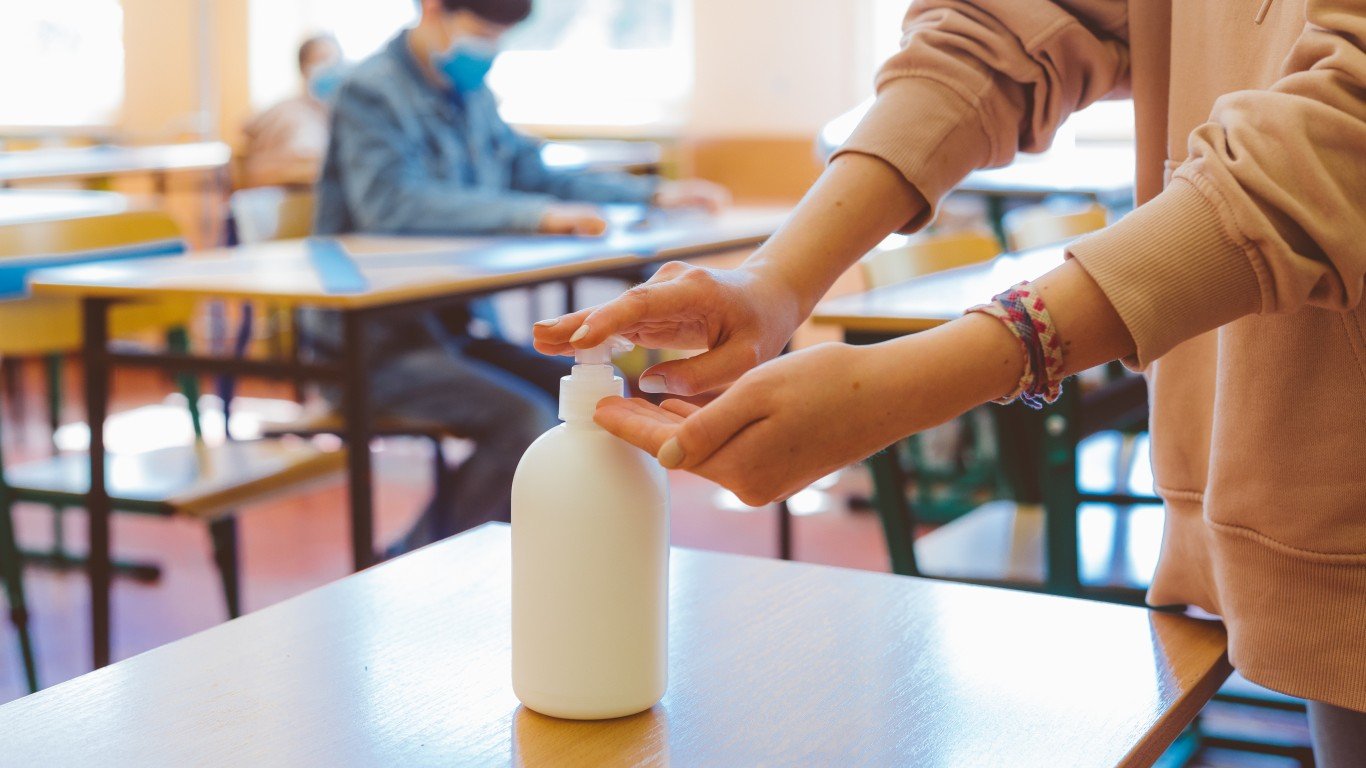
Iowa
> Re-closing schools: 33 counties have a 14-day rolling average positivity rate at or above 15%, which is the threshold that must be met before school districts can request to go to online-only learning.
> Health screening recommendations: Each school to come up with its own safety measures
> COVID-19 cases as of Jan 7: 9,233 per 100,000 people — 5th highest (total: 291,394)
> Change avg. daily cases, Dec 30 – Jan 6: 3.9% — 6th smallest increase (from 278,600 to 289,464)
> Population: 3.2 million
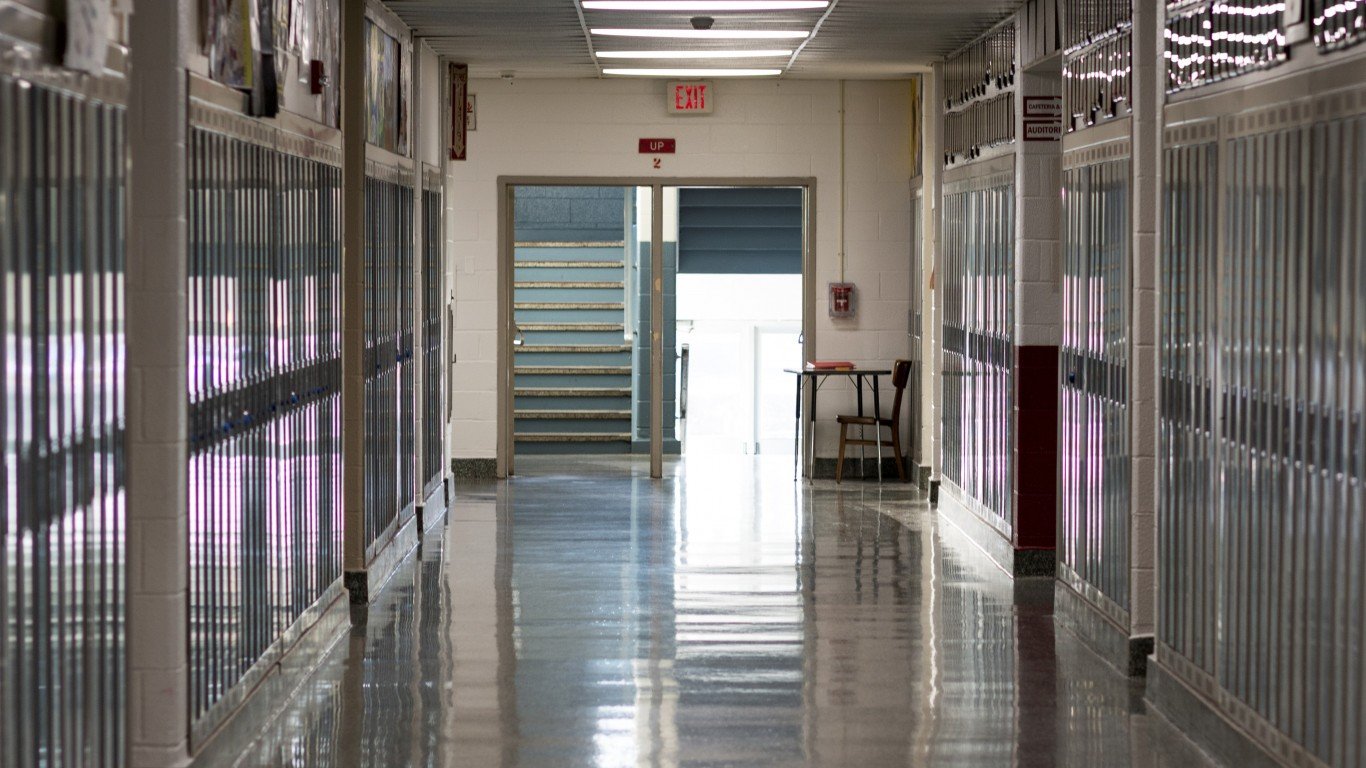
Kansas
> Re-closing schools: Schools in small and big towns have moved classes online full-time. As of Dec. 11, Wichita school district staff with COVID-19 accounted for 799 of the 1,182 cases the district has reported since Aug. 8.
> Health screening recommendations: Daily temperature checks for staff
> COVID-19 cases as of Jan 7: 8,134 per 100,000 people — 12th highest (total: 236,818)
> Change avg. daily cases, Dec 30 – Jan 6: 6.5% — 18th smallest increase (from 222,433 to 236,818)
> Population: 2.9 million
[in-text-ad]
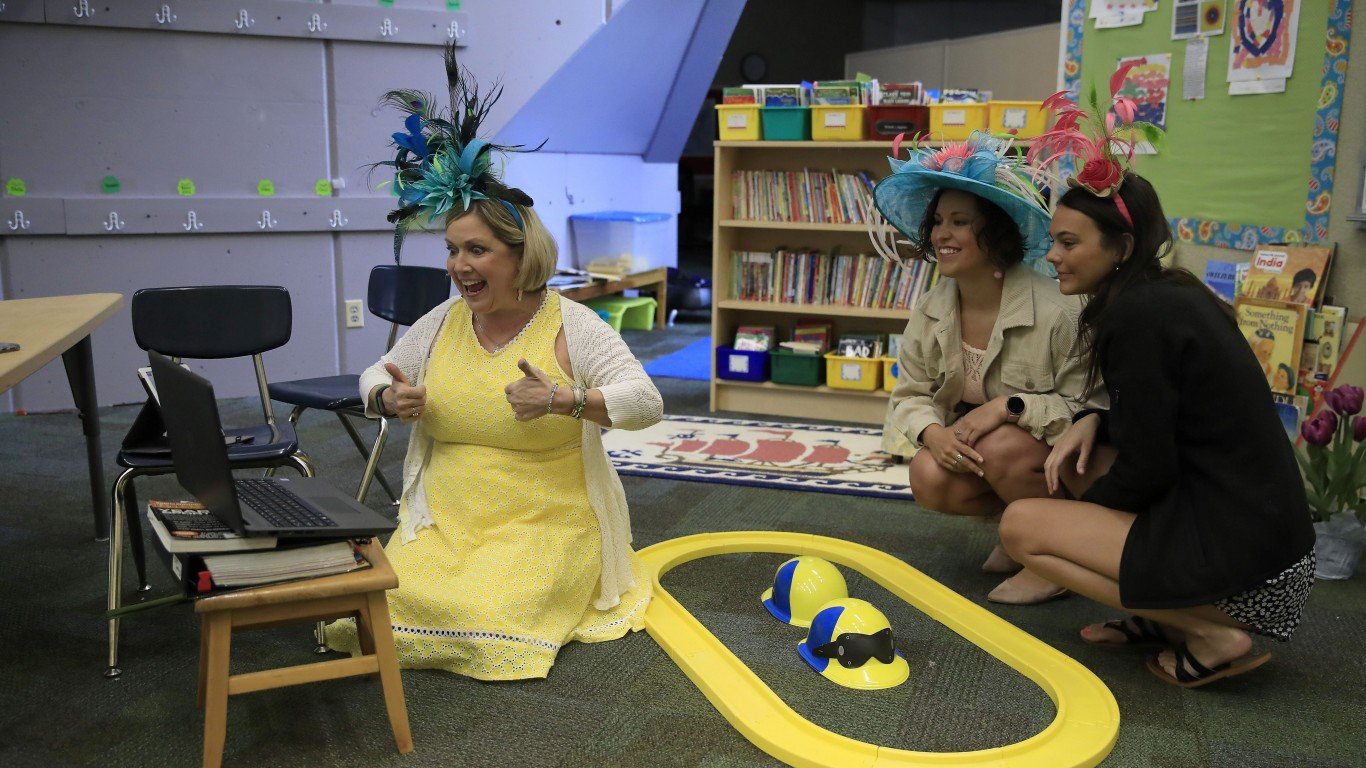
Kentucky
> Re-closing schools: Middle schools and high schools remained in remote learning until Jan. 4. Perry County moved to online learning, adding makeup days at the end of the academic year.
> Health screening recommendations: Daily temperature checks
> COVID-19 cases as of Jan 7: 6,413 per 100,000 people — 20th lowest (total: 286,541)
> Change avg. daily cases, Dec 30 – Jan 6: 8.0% — 16th largest increase (from 265,262 to 286,541)
> Population: 4.5 million
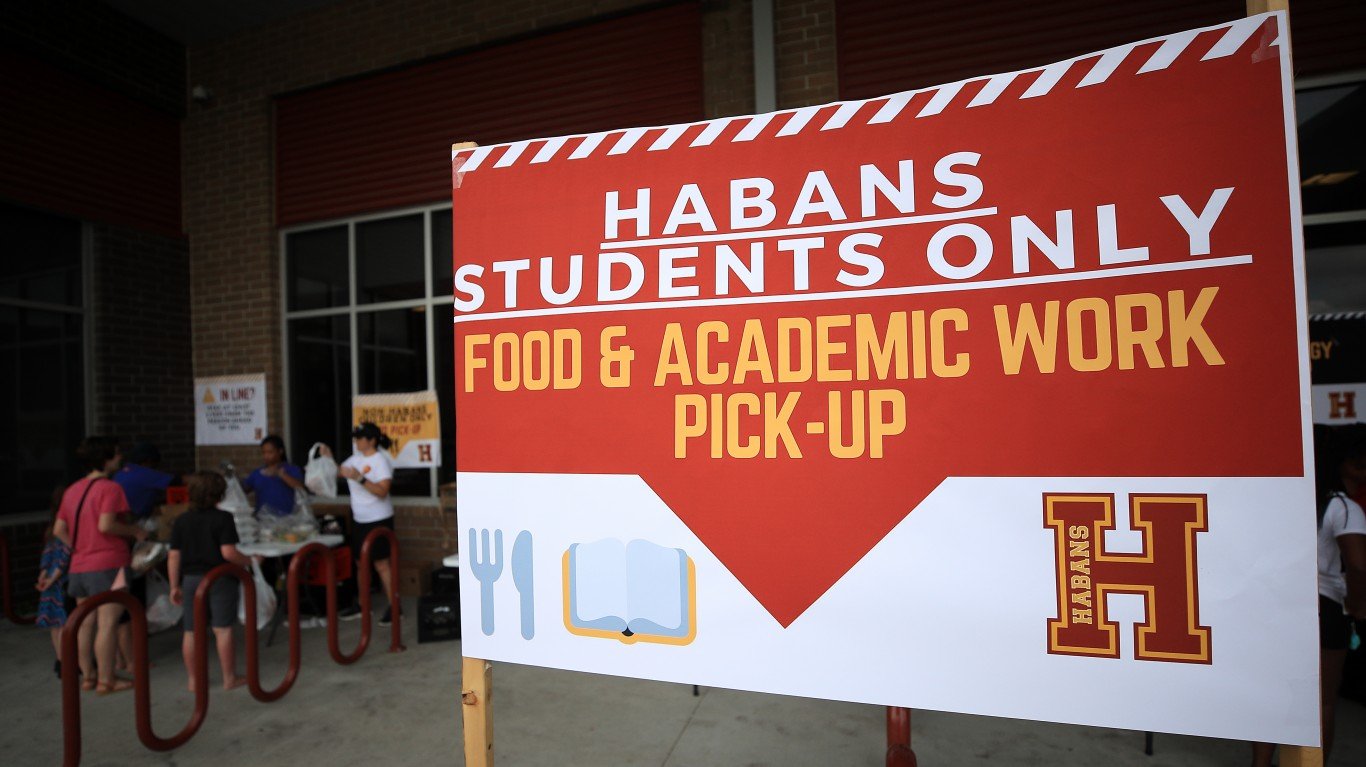
Louisiana
> Re-closing schools: High school students across the state are required to do in-person testing. Some schools in Baton Rouge will remain fully remote until the end of the fall semester. New Orleans public schools returned to in-person learning on Jan 4.
> Health screening recommendations: Daily symptom screening and temperature checks
> COVID-19 cases as of Jan 7: 7,254 per 100,000 people — 22nd highest (total: 338,054)
> Change avg. daily cases, Dec 30 – Jan 6: 7.2% — 25th smallest increase (from 311,229 to 333,524)
> Population: 4.7 million
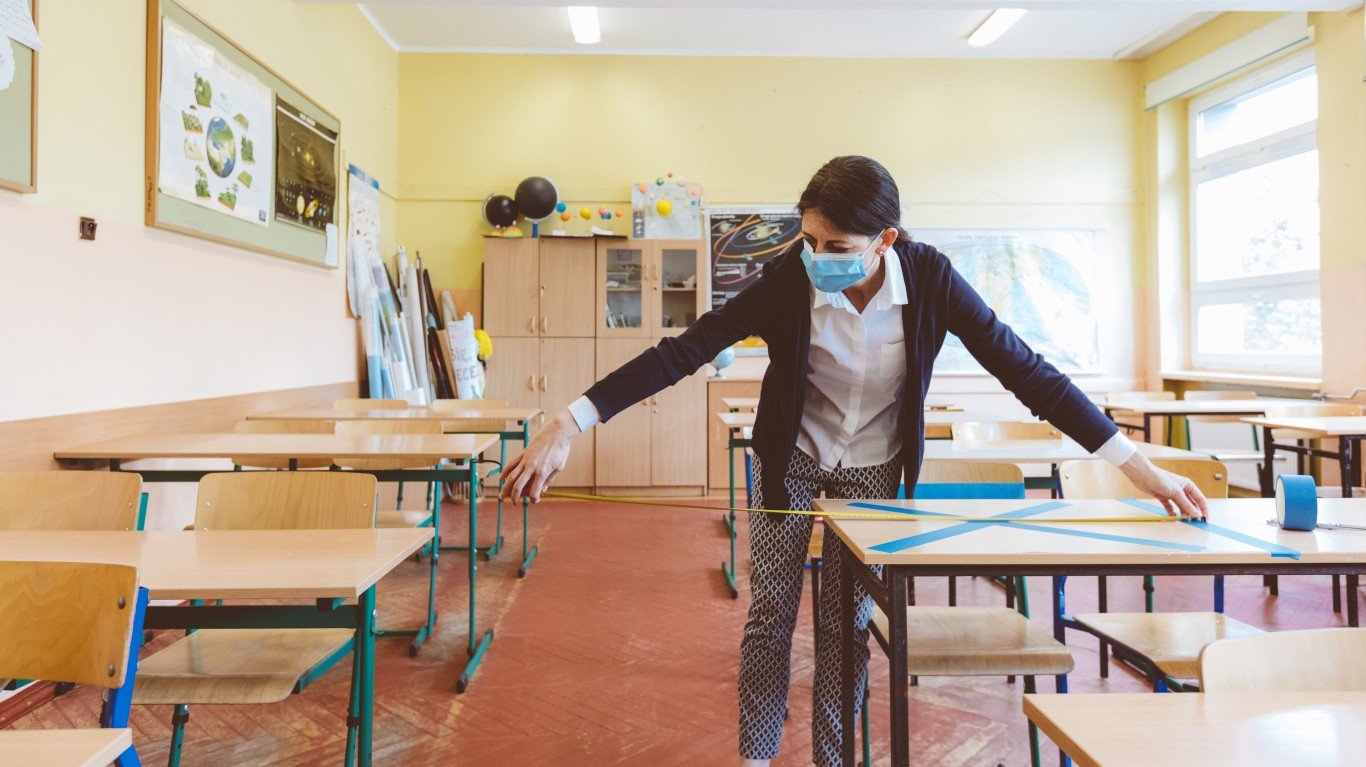
Maine
> Re-closing schools: Some schools are forced to move fully remote due to staffing shortages. 4 of Maine’s 16 counties are in the “yellow” category of transmission, meaning schools may want to suspend extracurricular activities and limit the number of people in buildings at on
> Health screening recommendations: Daily self-checks for students and staff
> COVID-19 cases as of Jan 7: 2,064 per 100,000 people — 3rd lowest (total: 27,625)
> Change avg. daily cases, Dec 30 – Jan 6: 15.3% — the largest increase (from 23,499 to 27,090)
> Population: 1.3 million
[in-text-ad-2]
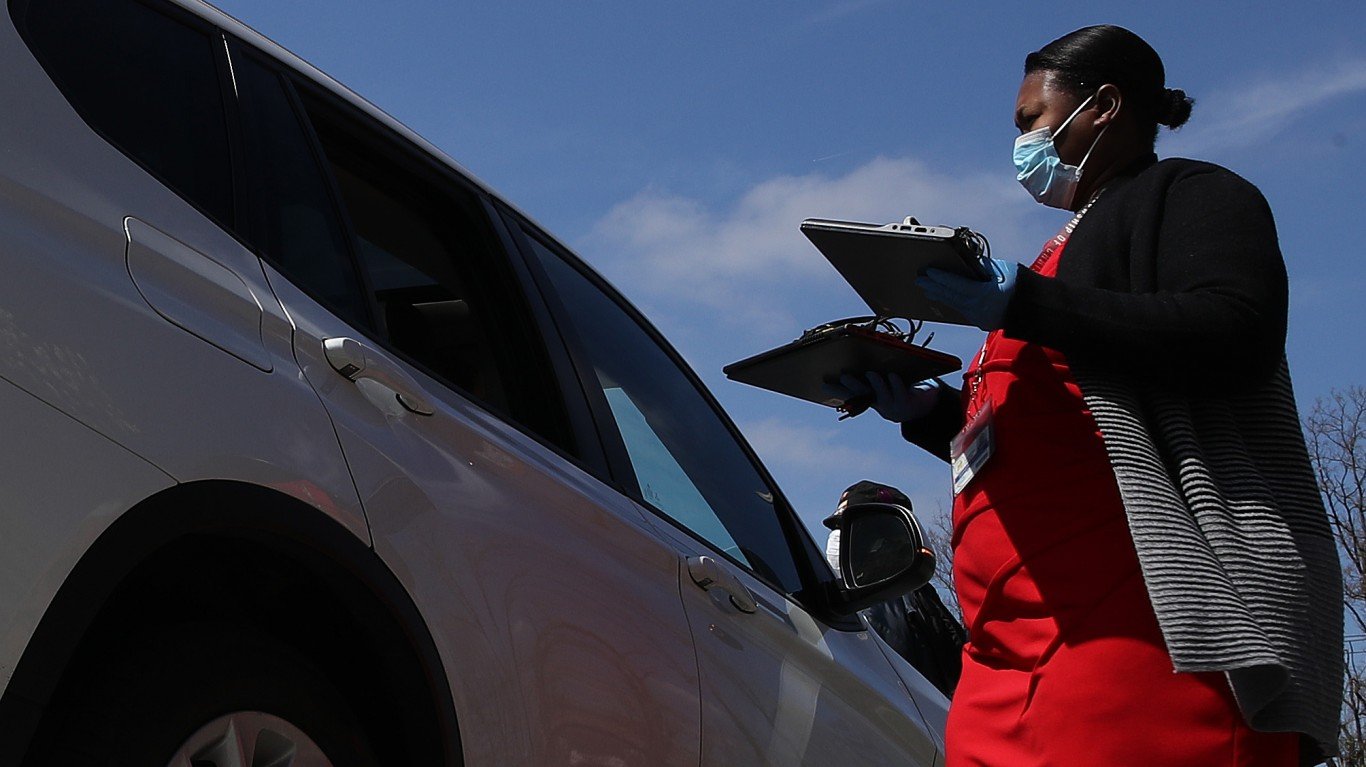
Maryland
> Re-closing schools: Many schools districts are canceling plans to move to in-person instruction any time soon.
> Health screening recommendations: Daily temperature checks for staff
> COVID-19 cases as of Jan 7: 4,896 per 100,000 people — 8th lowest (total: 295,874)
> Change avg. daily cases, Dec 30 – Jan 6: 7.0% — 22nd smallest increase (from 273,689 to 292,904)
> Population: 6.0 million
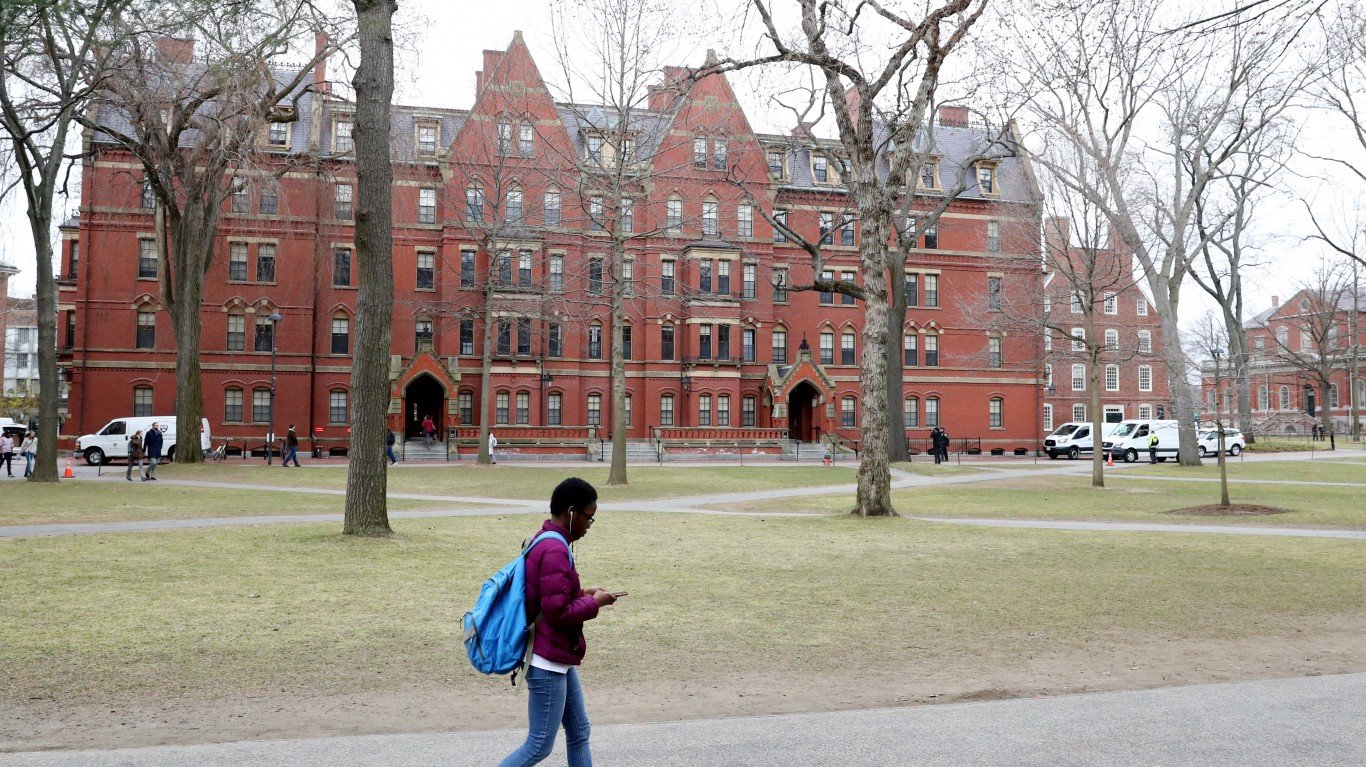
Massachusetts
> Re-closing schools: In-person instruction in Boston will resume when there are 2 full weeks of falling infection rates. The state started a free rapid COVID-19 testing program. The Marshfield School District went remote after 32 new COVID-19 cases were confirmed.
> Health screening recommendations: Monitoring for symptoms, but temperature checks are not recommended
> COVID-19 cases as of Jan 7: 5,854 per 100,000 people — 16th lowest (total: 404,053)
> Change avg. daily cases, Dec 30 – Jan 6: 9.8% — 8th largest increase (from 367,918 to 404,053)
> Population: 6.9 million
[in-text-ad]
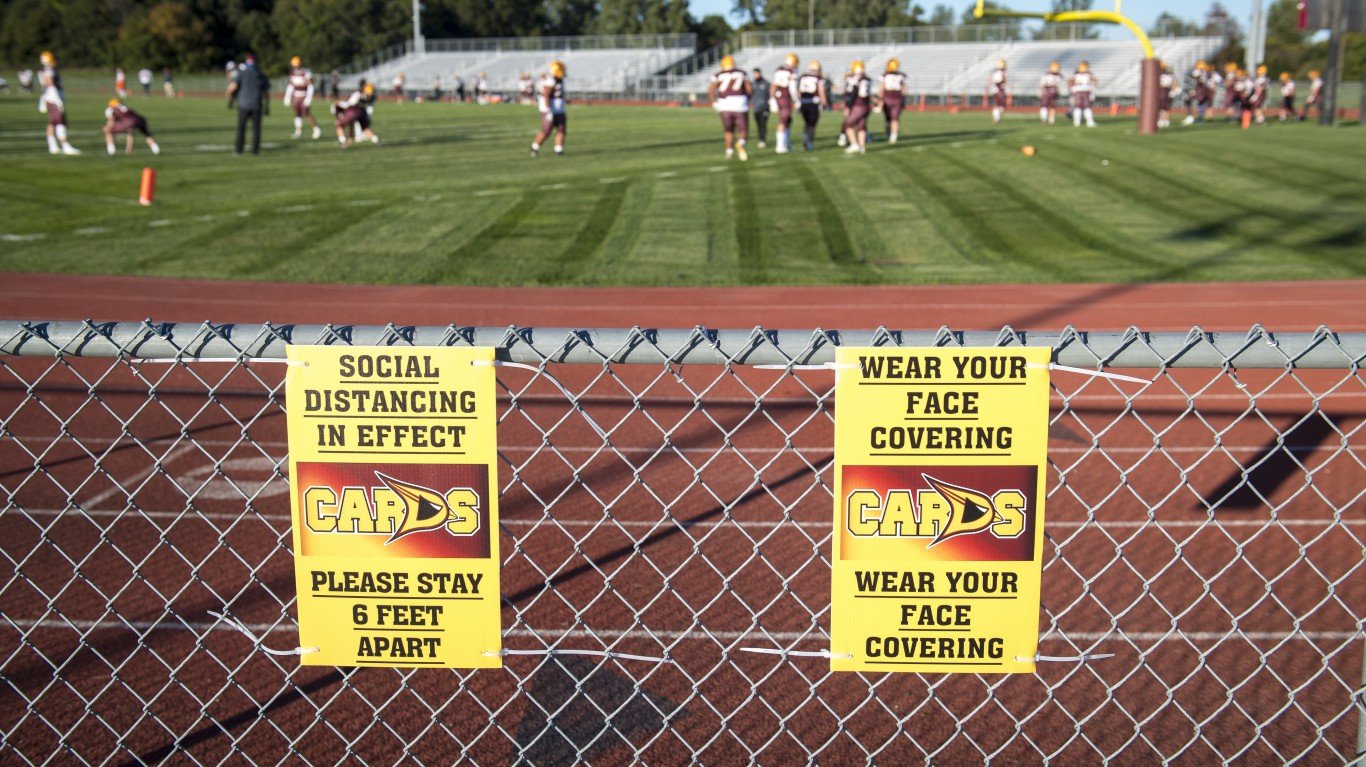
Michigan
> Re-closing schools: Many schools in the most populous counties stayed closed until after the winter break. High schools were allowed to resume in-person learning on Jan 4.
> Health screening recommendations: Daily temperature checks
> COVID-19 cases as of Jan 7: 5,517 per 100,000 people — 12th lowest (total: 551,498)
> Change avg. daily cases, Dec 30 – Jan 6: 4.3% — 8th smallest increase (from 528,621 to 551,498)
> Population: 10.0 million
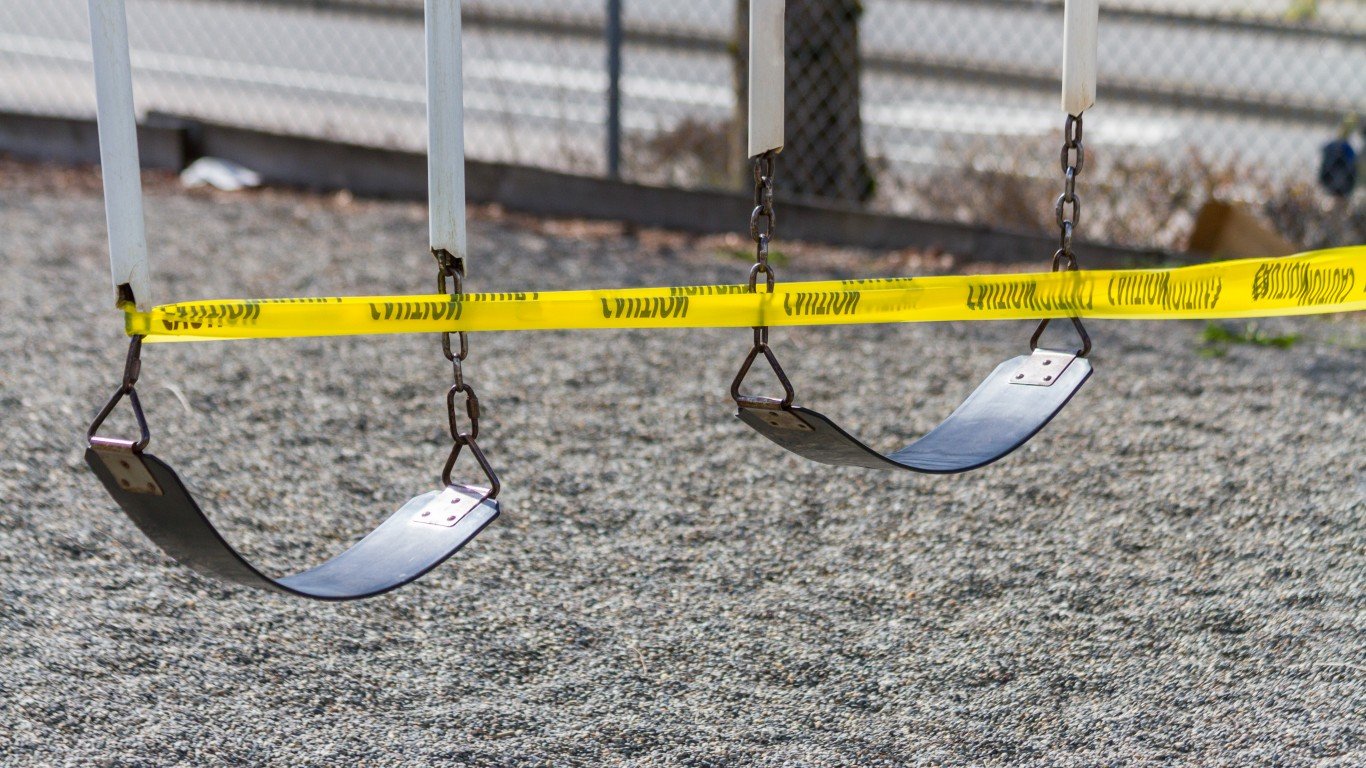
Minnesota
> Re-closing schools: At least 17 of the state’s 20 largest school districts are in distance learning for middle and high school students. Minnesota elementary schools can reopen Jan. 18.
> Health screening recommendations: Daily symptom screening and temperature checks
> COVID-19 cases as of Jan 7: 7,656 per 100,000 people — 19th highest (total: 429,570)
> Change avg. daily cases, Dec 30 – Jan 6: 3.5% — 4th smallest increase (from 413,107 to 427,587)
> Population: 5.6 million
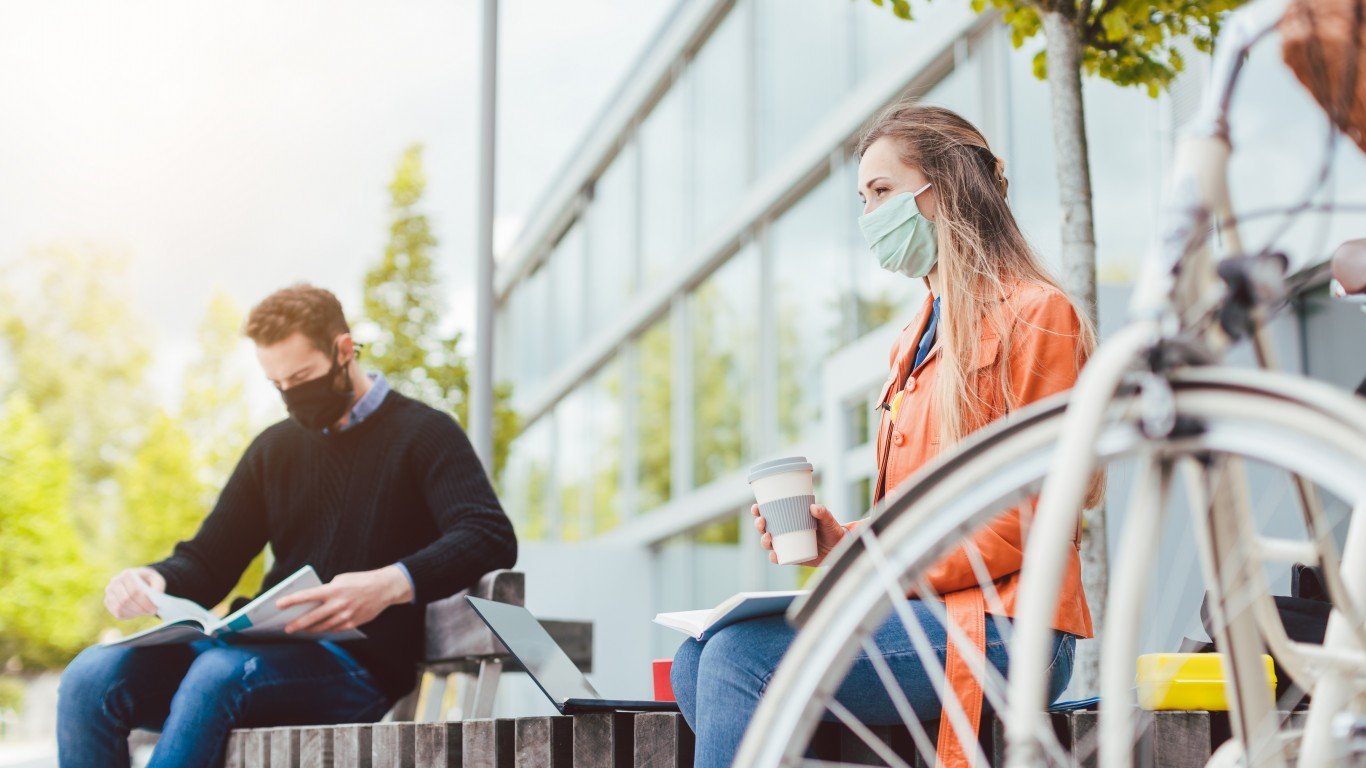
Mississippi
> Re-closing schools: 1,076 staff and 621 students across the state tested positive for COVID-19 between Dec 7 – Dec 11, slightly less than the peak period between Nov 30 – Dec 4.
> Health screening recommendations: Daily symptom screening and temperature checks
> COVID-19 cases as of Jan 7: 7,642 per 100,000 people — 20th highest (total: 228,235)
> Change avg. daily cases, Dec 30 – Jan 6: 7.1% — 24th smallest increase (from 213,055 to 228,235)
> Population: 3.0 million
[in-text-ad-2]

Missouri
> Re-closing schools: New mandates say that if people wear masks correctly and show no symptoms, they don’t have to quarantine for 14 days if exposed.
> Health screening recommendations: Daily symptom screening
> COVID-19 cases as of Jan 7: 6,732 per 100,000 people — 24th highest (total: 412,426)
> Change avg. daily cases, Dec 30 – Jan 6: 5.0% — 13th smallest increase (from 388,856 to 408,443)
> Population: 6.1 million
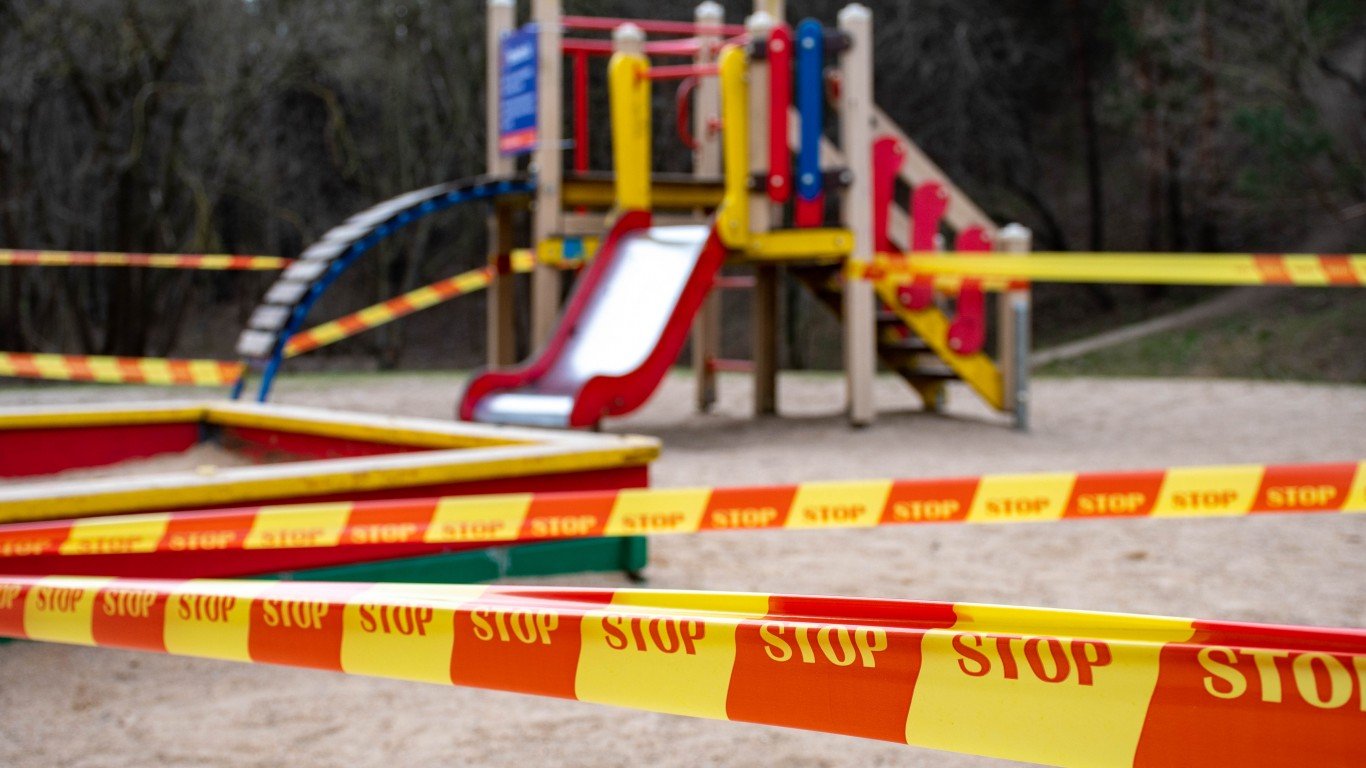
Montana
> Re-closing schools: As of Dec 2, there were 3,594 school-related COVID-19 cases, with almost as many cases in elementary schools as in high schools.
> Health screening recommendations: Temperature checks for visitors
> COVID-19 cases as of Jan 7: 7,978 per 100,000 people — 15th highest (total: 84,750)
> Change avg. daily cases, Dec 30 – Jan 6: 3.4% — 3rd smallest increase (from 81,300 to 84,060)
> Population: 1.1 million
[in-text-ad]
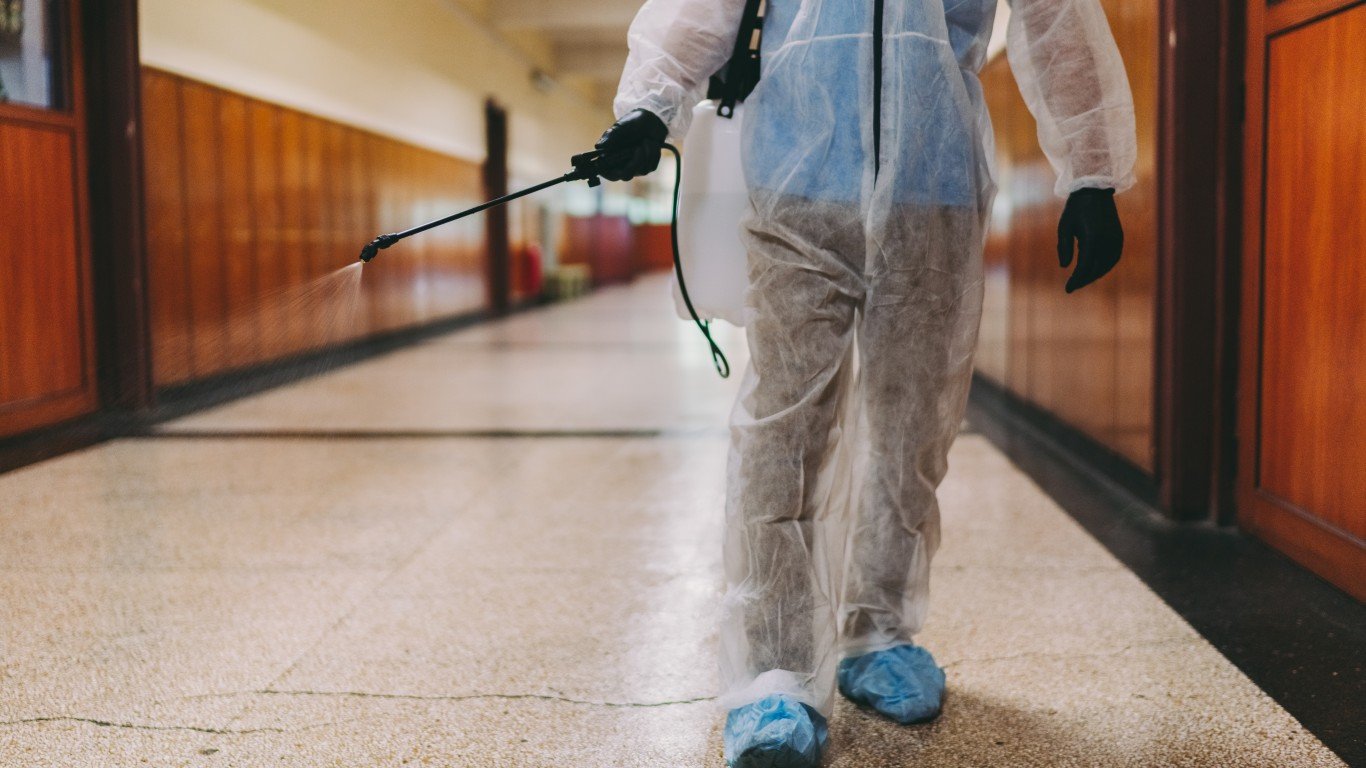
Nebraska
> Re-closing schools: Teachers union Nebraska State Education Association called on Gov. Ricketts to enact more restrictions amid a new surge of cases. Omaha teachers may be able to receive the COVID vaccine in January.
> Health screening recommendations: For visitors to wash hands before entering the school as well as students self-screen for symptoms
> COVID-19 cases as of Jan 7: 8,940 per 100,000 people — 7th highest (total: 172,469)
> Change avg. daily cases, Dec 30 – Jan 6: 4.4% — 9th smallest increase (from 163,781 to 171,033)
> Population: 1.9 million

Nevada
> Re-closing schools: Secondary students in schools in Washoe County School District moved to full distance learning until Jan. 4. Schools started testing symptomatic students and staff with an antigen test. Some districts have been allowed to bypass regulations to hire substi
> Health screening recommendations: Daily symptom screening and temperature checks as well as post signs about proper hand-washing and other ways to stop the virus
> COVID-19 cases as of Jan 7: 7,633 per 100,000 people — 21st highest (total: 231,618)
> Change avg. daily cases, Dec 30 – Jan 6: 6.6% — 19th smallest increase (from 222,594 to 237,393)
> Population: 3.0 million
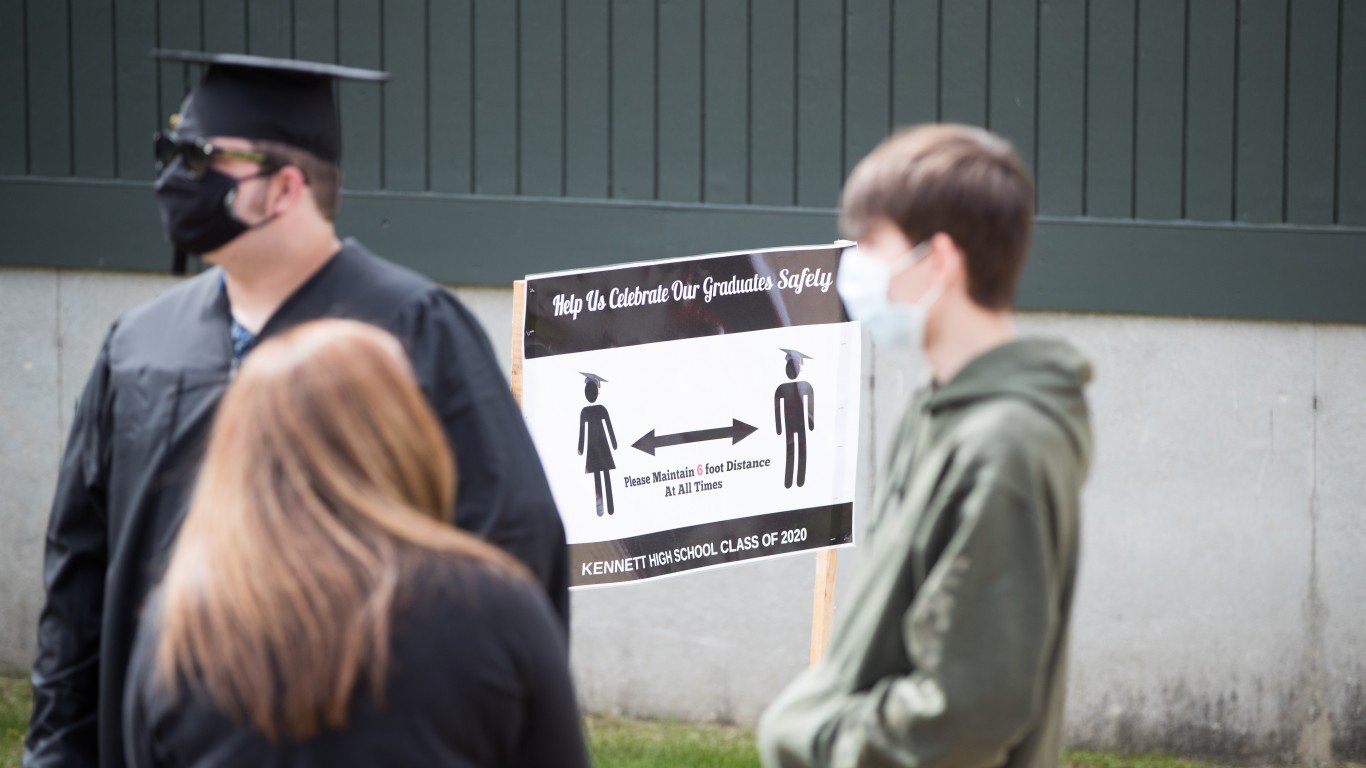
New Hampshire
> Re-closing schools: Most of the state’s 15 school districts went fully remote at some point in December. Some schools are forced to move online due to staffing shortages as teachers and staff have to quarantine.
> Health screening recommendations: Daily symptom screenings for staff and students
> COVID-19 cases as of Jan 7: 3,600 per 100,000 people — 6th lowest (total: 48,838)
> Change avg. daily cases, Dec 30 – Jan 6: 12.9% — 2nd largest increase (from 43,242 to 48,838)
> Population: 1.4 million
[in-text-ad-2]

New Jersey
> Re-closing schools: Schools in Paterson extended online learning until Jan 19. Clifton’s school district shut down all schools and moved classes online until January. 105 outbreaks have been reported among students and staff in New Jersey schools.
> Health screening recommendations: Daily symptom screening
> COVID-19 cases as of Jan 7: 6,339 per 100,000 people — 19th lowest (total: 564,750)
> Change avg. daily cases, Dec 30 – Jan 6: 6.9% — 21st smallest increase (from 521,273 to 557,219)
> Population: 8.9 million

New Mexico
> Re-closing schools: The reopening of schools for in-person instruction has been paused, no districts are allowed to start a hybrid model under the new, tighter restrictions. Rio Rancho Public Schools moved to full-time online instruction until Jan 18.
> Health screening recommendations: Daily temperature checks
> COVID-19 cases as of Jan 7: 7,158 per 100,000 people — 23rd highest (total: 149,984)
> Change avg. daily cases, Dec 30 – Jan 6: 6.2% — 16th smallest increase (from 141,186 to 149,984)
> Population: 2.1 million
[in-text-ad]

New York
> Re-closing schools: Only elementary schools are open for in-person instruction and for students whose parents agree to a weekly testing regimen for the coronavirus. The teachers’ union wants all schools to close again as NYC’s positivity rate is close to 9%.
> Health screening recommendations: Daily temperature checks for all
> COVID-19 cases as of Jan 7: 5,503 per 100,000 people — 11th lowest (total: 1,075,312)
> Change avg. daily cases, Dec 30 – Jan 6: 10.5% — 7th largest increase (from 957,412 to 1,057,676)
> Population: 19.5 million

North Carolina
> Re-closing schools: Some Cumberland County Schools schools will reopen in January 2021. The Johnston County school board voted 5-2 to suspend in-person classes.
> Health screening recommendations: Daily temperature checks
> COVID-19 cases as of Jan 7: 5,708 per 100,000 people — 14th lowest (total: 592,746)
> Change avg. daily cases, Dec 30 – Jan 6: 9.3% — 11th largest increase (from 532,830 to 582,348)
> Population: 10.4 million

North Dakota
> Re-closing schools: The state started free rapid testing for K-12 teachers, staff and administrators. High school winter sports and extracurricular activities were suspended statewide until Dec. 14.
> Health screening recommendations: Testing for COVID-19 based on risk level
> COVID-19 cases as of Jan 7: 12,388 per 100,000 people — the highest (total: 94,156)
> Change avg. daily cases, Dec 30 – Jan 6: 1.8% — the smallest increase (from 92,202 to 93,832)
> Population: 760,000
[in-text-ad-2]
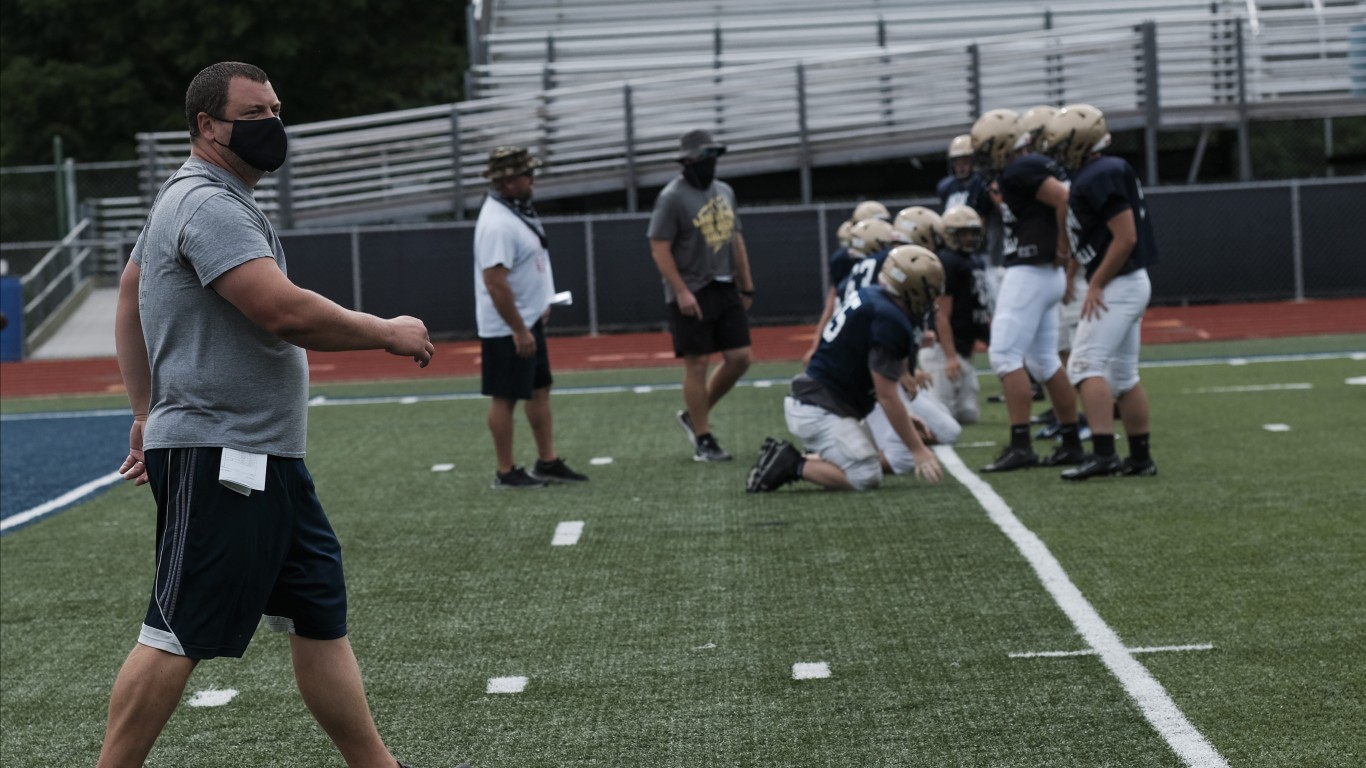
Ohio
> Re-closing schools: Ohio students who are exposed to COVID-19 are no longer asked to quarantine, if mask and distancing protocols are followed.
> Health screening recommendations: Daily symptom screening
> COVID-19 cases as of Jan 7: 6,442 per 100,000 people — 21st lowest (total: 753,068)
> Change avg. daily cases, Dec 30 – Jan 6: 7.5% — 23rd largest increase (from 690,748 to 742,817)
> Population: 11.7 million
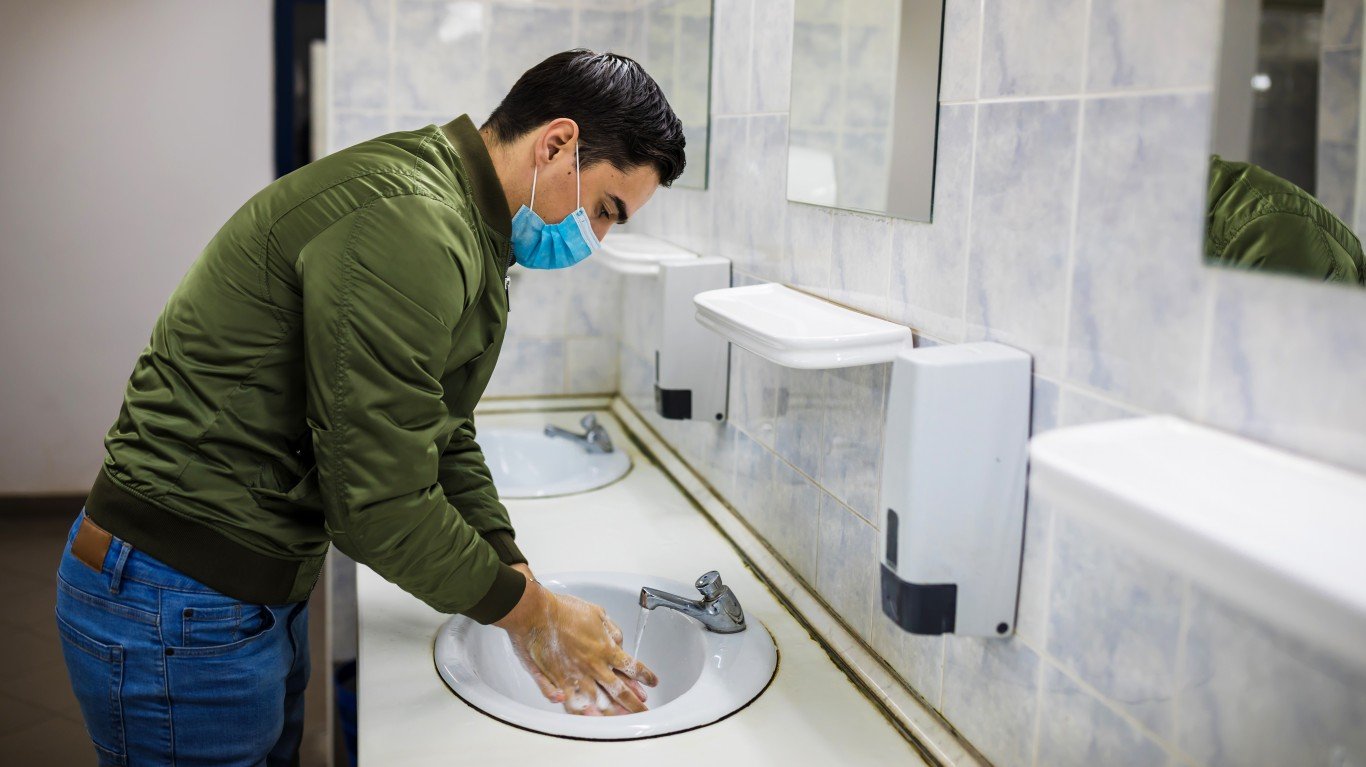
Oklahoma
> Re-closing schools: At least 17 schools districts in the state are moving to online learning due to a rise in coronavirus cases. Public schools in Tulsa will follow a tiered plan for in-person learning starting in January. Phasing will start Jan 15.
> Health screening recommendations: Daily temperature checks at home
> COVID-19 cases as of Jan 7: 7,998 per 100,000 people — 14th highest (total: 315,354)
> Change avg. daily cases, Dec 30 – Jan 6: 7.1% — 23rd smallest increase (from 290,936 to 311,573)
> Population: 3.9 million
[in-text-ad]

Oregon
> Re-closing schools: Starting Jan 1, individual schools make the decision whether to open for in-person instruction. State guidelines will be advisory.
> Health screening recommendations: Daily symptom screening and temperature checks
> COVID-19 cases as of Jan 7: 2,869 per 100,000 people — 4th lowest (total: 120,223)
> Change avg. daily cases, Dec 30 – Jan 6: 6.4% — 17th smallest increase (from 112,260 to 119,488)
> Population: 4.2 million
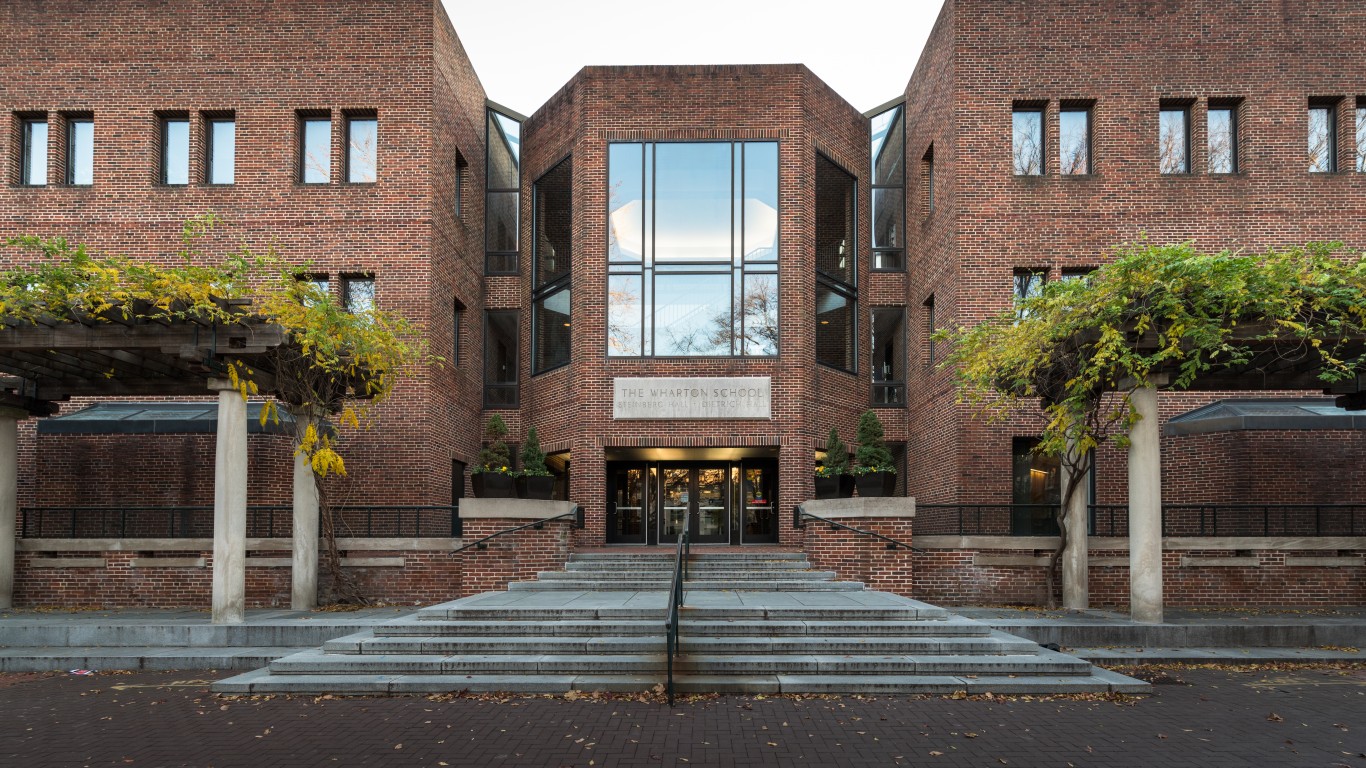
Pennsylvania
> Re-closing schools: Schools must close if they reach a certain number of confirmed COVID-19 cases. More than 99% of districts have submitted forms attesting that they are following strict health and safety protocols, a requirement to stay open.
> Health screening recommendations: Daily symptom screening
> COVID-19 cases as of Jan 7: 5,412 per 100,000 people — 10th lowest (total: 693,087)
> Change avg. daily cases, Dec 30 – Jan 6: 8.2% — 15th largest increase (from 631,333 to 683,389)
> Population: 12.8 million

Rhode Island
> Re-closing schools: All public school districts can reopen for in-person instruction after the winter holiday break — January 7 — at the earliest. All sports were cancelled until January.
> Health screening recommendations: At-home or on-site symptom screening as well as temperature checks
> COVID-19 cases as of Jan 7: 9,135 per 100,000 people — 6th highest (total: 96,591)
> Change avg. daily cases, Dec 30 – Jan 6: 8.5% — 14th largest increase (from 87,949 to 95,463)
> Population: 1.1 million
[in-text-ad-2]
South Carolina
> Re-closing schools: Public schools across the state started testing for COVID-19 for free in an attempt to help keep classrooms open.
> Health screening recommendations: Each school to come up with its own safety measures
> COVID-19 cases as of Jan 7: 6,650 per 100,000 people — 25th lowest (total: 338,112)
> Change avg. daily cases, Dec 30 – Jan 6: 9.8% — 9th largest increase (from 303,475 to 333,235)
> Population: 5.1 million
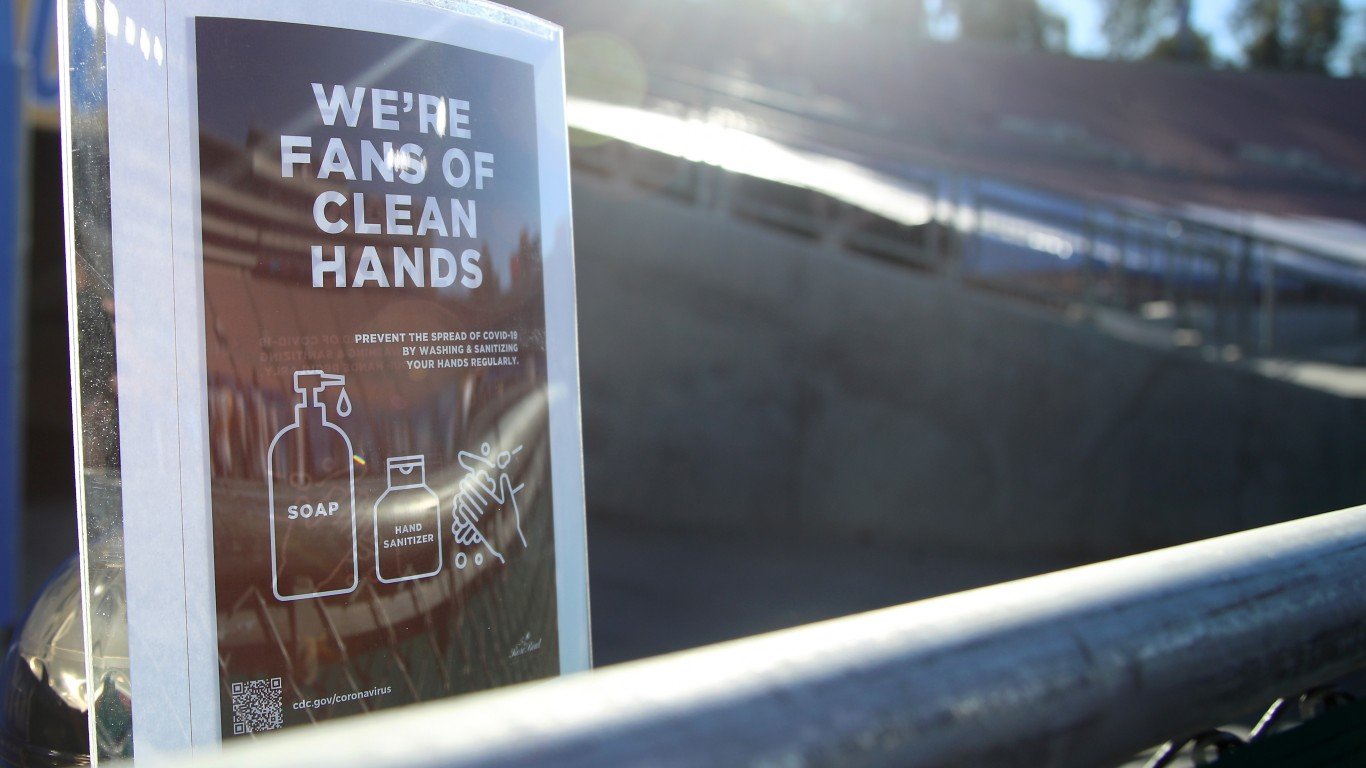
South Dakota
> Re-closing schools: South Dakota’s positivity rate is around 42%, suggesting testing is still very limited.
> Health screening recommendations: Daily symptom screening and temperature checks
> COVID-19 cases as of Jan 7: 10,447 per 100,000 people — 2nd highest (total: 92,166)
> Change avg. daily cases, Dec 30 – Jan 6: 2.4% — 2nd smallest increase (from 89,725 to 91,875)
> Population: 882,000
[in-text-ad]

Tennessee
> Re-closing schools: Schools in the state’s largest school districts — Shelby County Schools, Metro Nashville Public Schools, Knox County Schools and Hamilton County Schools — are finishing the fall semester with fully remote instruction.
> Health screening recommendations: Daily symptom screening and temperature checks
> COVID-19 cases as of Jan 7: 9,235 per 100,000 people — 4th highest (total: 625,237)
> Change avg. daily cases, Dec 30 – Jan 6: 7.6% — 20th largest increase (from 580,809 to 625,237)
> Population: 6.8 million
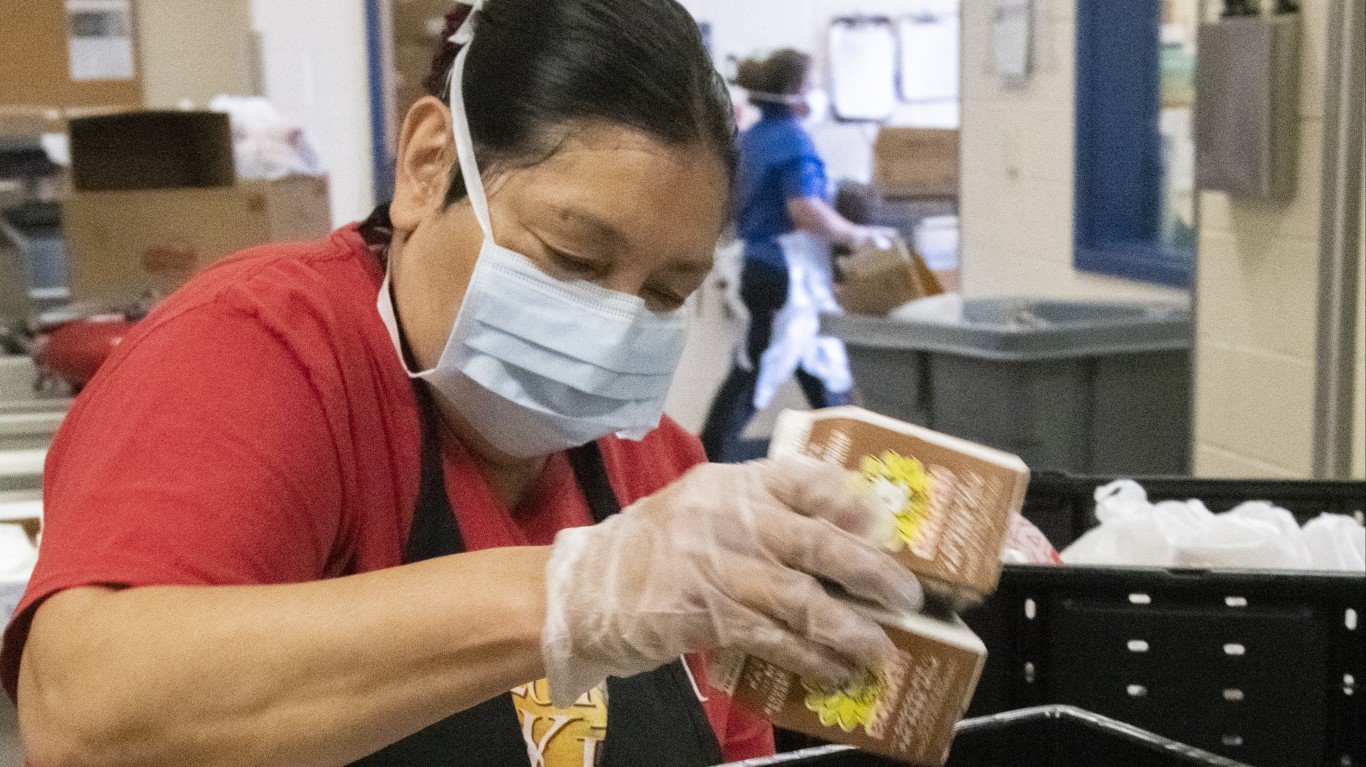
Texas
> Re-closing schools: At least 8 school districts in North Texas and 7 in Central Texas temporarily moved classes online due to a spike in COVID-19 cases. Several schools in the Fort Worth-area temporarily moved classes online due to a spike of COVID-19 cases.
> Health screening recommendations: Symptom self-screening for staff
> COVID-19 cases as of Jan 7: 6,505 per 100,000 people — 22nd lowest (total: 1,867,163)
> Change avg. daily cases, Dec 30 – Jan 6: 7.5% — 24th largest increase (from 1,737,447 to 1,867,163)
> Population: 28.7 million
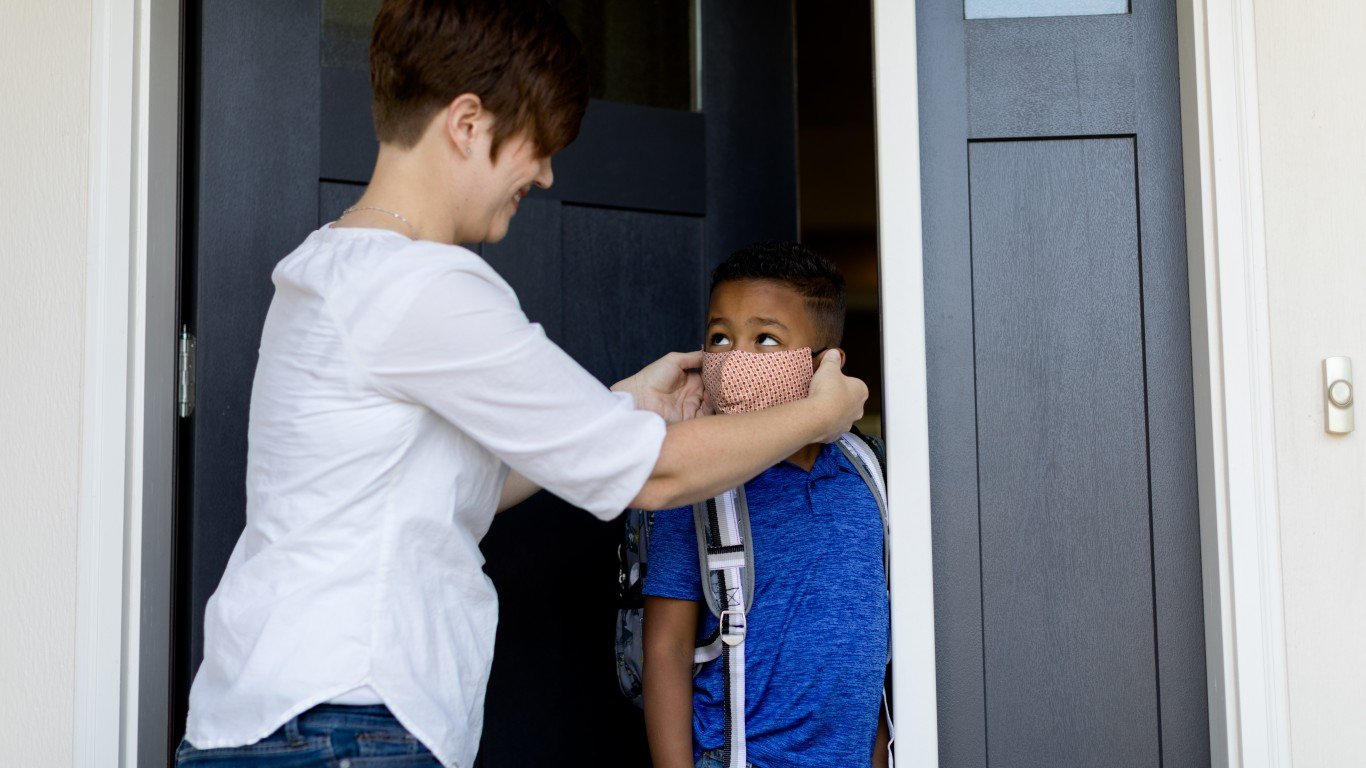
Utah
> Re-closing schools: Teachers are now eligible for COVID-19 vaccinations and Salt Lake City won’t reopen junior high and high schools for in-person instruction until teachers can get vaccinated.
> Health screening recommendations: For students and school staff to self-monitor for symptoms
> COVID-19 cases as of Jan 7: 9,260 per 100,000 people — 3rd highest (total: 292,720)
> Change avg. daily cases, Dec 30 – Jan 6: 7.6% — 21st largest increase (from 271,940 to 292,720)
> Population: 3.2 million
[in-text-ad-2]

Vermont
> Re-closing schools: Asymptomatic teachers and staff members at all public schools in Vermont can take an on-site COVID-19 test.
> Health screening recommendations: Daily symptom screening at home
> COVID-19 cases as of Jan 7: 1,342 per 100,000 people — the lowest (total: 8,403)
> Change avg. daily cases, Dec 30 – Jan 6: 12.1% — 5th largest increase (from 7,276 to 8,158)
> Population: 626,000

Virginia
> Re-closing schools: Henrico County Schools delay in-person reopening. Fairfax County Public Schools in moving Group 3 students to full-time remote learning. Richmond Public Schools cancelled winter sports.
> Health screening recommendations: Daily symptom screenings
> COVID-19 cases as of Jan 7: 4,493 per 100,000 people — 7th lowest (total: 382,679)
> Change avg. daily cases, Dec 30 – Jan 6: 9.6% — 10th largest increase (from 344,345 to 377,300)
> Population: 8.5 million
[in-text-ad]
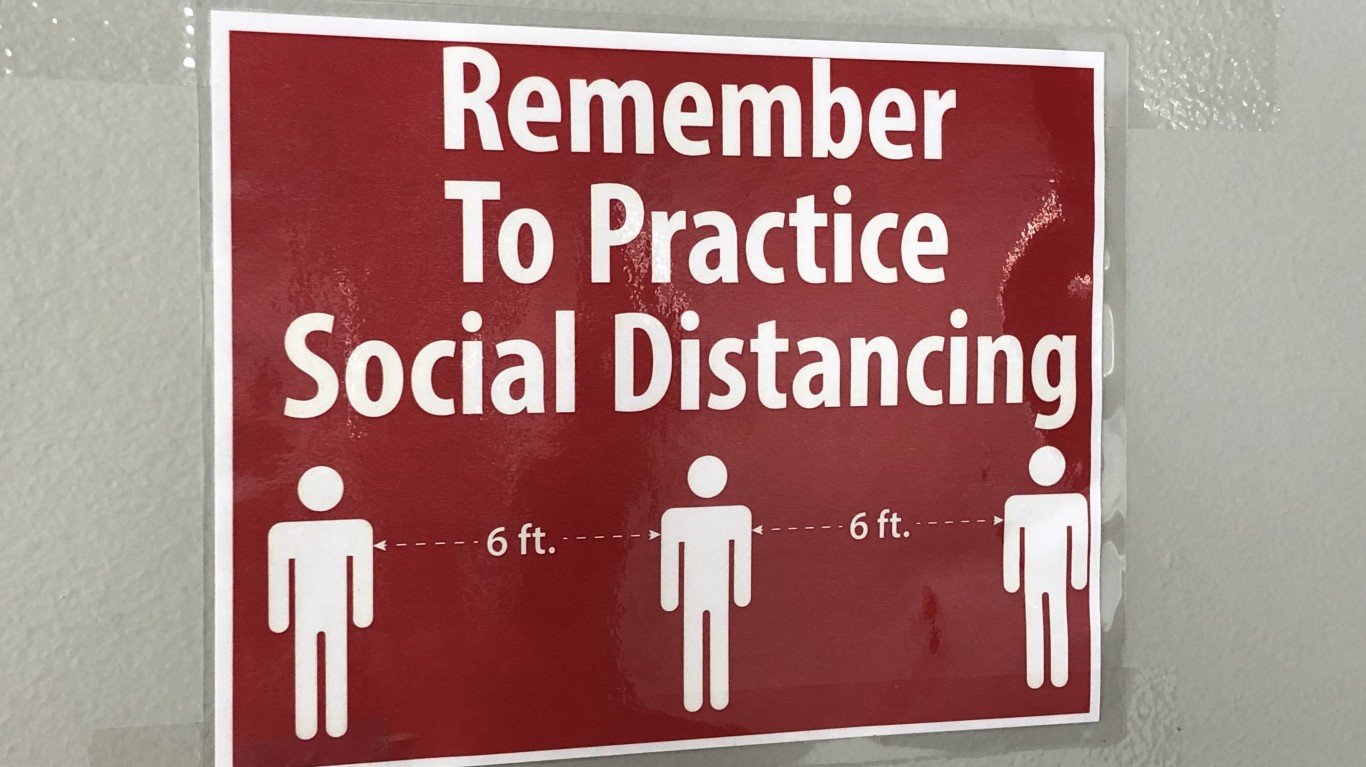
Washington
> Re-closing schools: Health officials in Thurston County recommend holding off on expanding in-person learning due to resurgence of COVID-19 cases. Public school in Seattle won’t open for in-person instruction until at least Jan 28.
> Health screening recommendations: Daily symptom screening and temperature checks
> COVID-19 cases as of Jan 7: 3,460 per 100,000 people — 5th lowest (total: 260,752)
> Change avg. daily cases, Dec 30 – Jan 6: 7.6% — 22nd largest increase (from 242,330 to 260,752)
> Population: 7.5 million
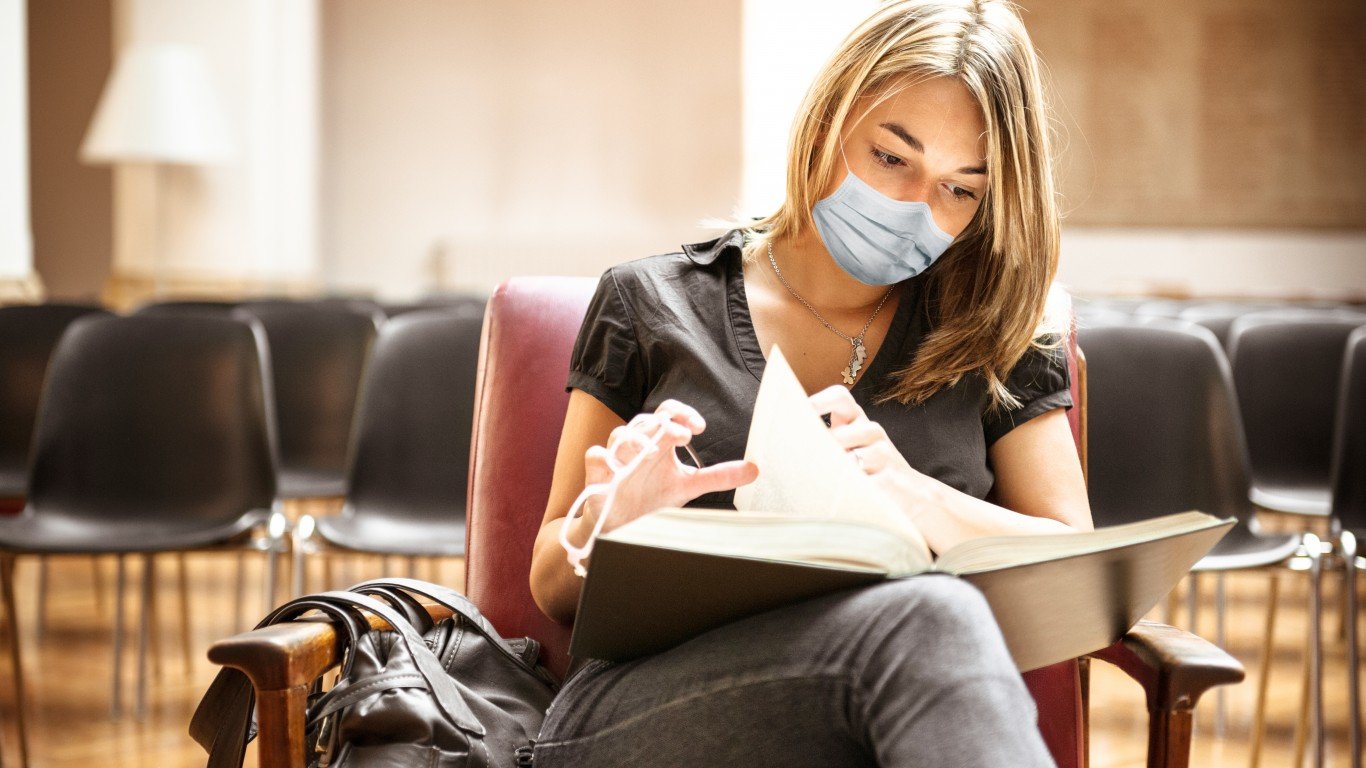
West Virginia
> Re-closing schools: Elementary, middle, and many high schools will reopen for in-person instruction starting Jan 19.
> Health screening recommendations: Daily symptom screening and temperature checks
> COVID-19 cases as of Jan 7: 5,316 per 100,000 people — 9th lowest (total: 96,002)
> Change avg. daily cases, Dec 30 – Jan 6: 12.4% — 3rd largest increase (from 84,225 to 94,678)
> Population: 1.8 million
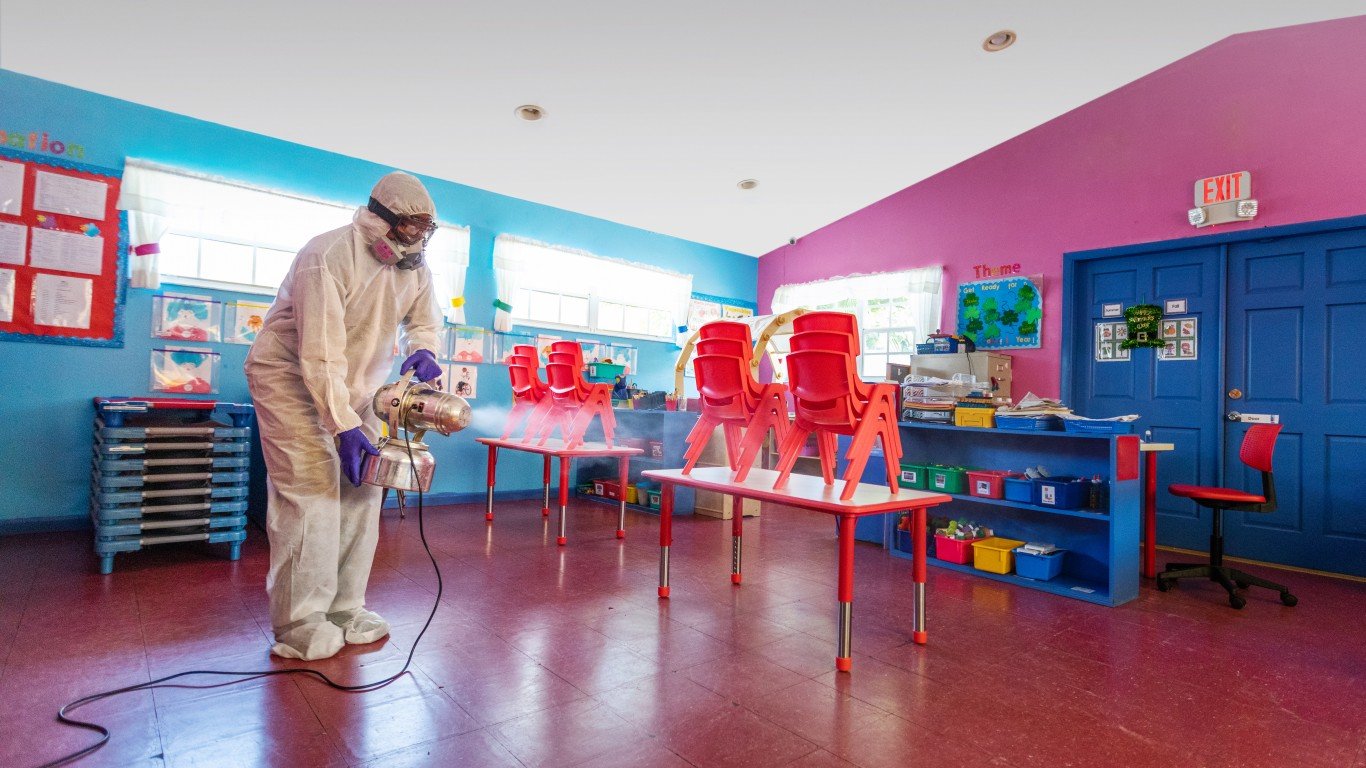
Wisconsin
> Re-closing schools: Racine Public Health Department ordered schools in Racine, Wind Point, and Elmwood Park to close until Jan 15. Appleton Area School District, the state’s sixth largest, aims to open schools for in-person instruction Jan 19.
> Health screening recommendations: Daily symptom screening and temperature checks recommended
> COVID-19 cases as of Jan 7: 8,575 per 100,000 people — 8th highest (total: 498,538)
> Change avg. daily cases, Dec 30 – Jan 6: 3.7% — 5th smallest increase (from 477,292 to 494,747)
> Population: 5.8 million
[in-text-ad-2]
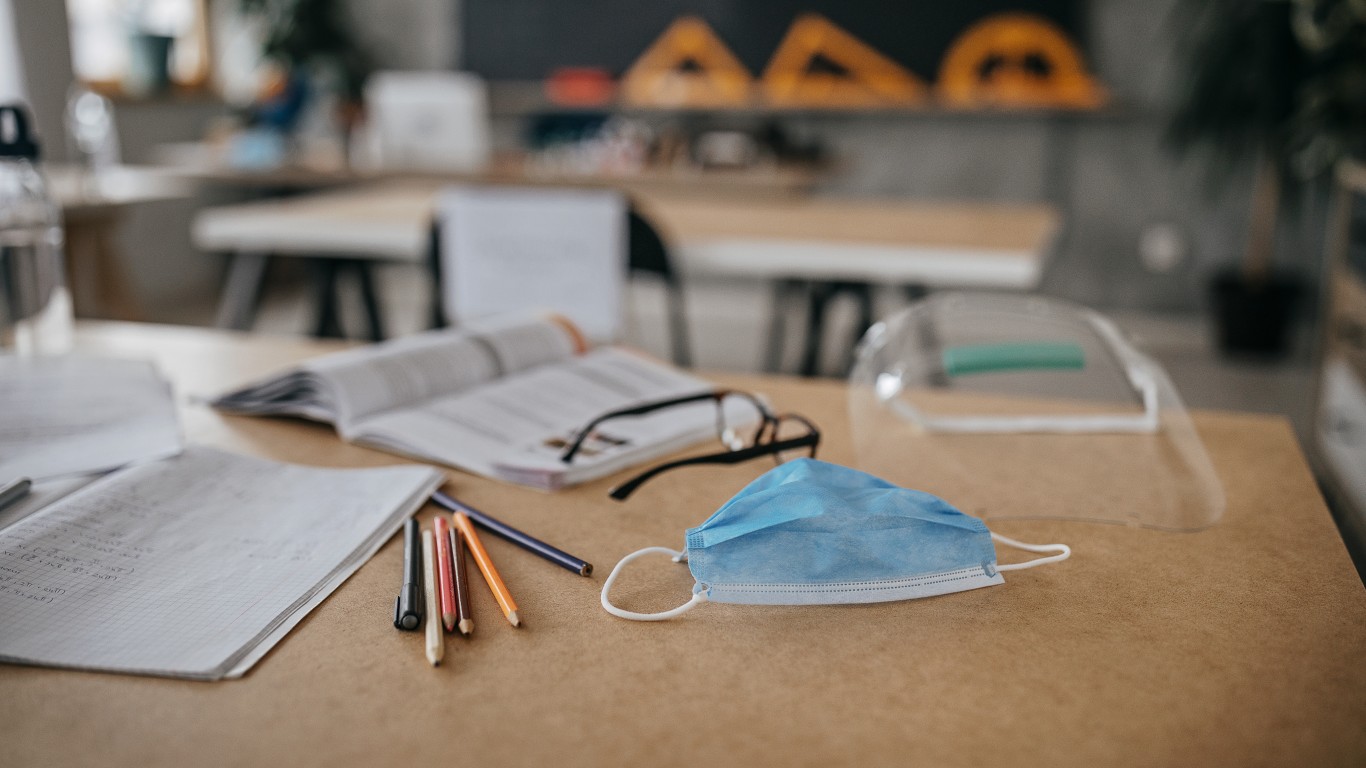
Wyoming
> Re-closing schools: Students don’t have to quarantine anymore if, when exposed, both the infected student and close contacts were wearing face coverings. All students in Wyoming City Schools were moved to remote learning from Jan 4 – Jan 8.
> Health screening recommendations: Each school district to come up with its own safety measures
> COVID-19 cases as of Jan 7: 7,943 per 100,000 people — 16th highest (total: 45,890)
> Change avg. daily cases, Dec 30 – Jan 6: 4.0% — 7th smallest increase (from 44,133 to 45,890)
> Population: 578,000
Sponsored: Find a Qualified Financial Advisor
Finding a qualified financial advisor doesn’t have to be hard. SmartAsset’s free tool matches you with up to 3 fiduciary financial advisors in your area in 5 minutes. Each advisor has been vetted by SmartAsset and is held to a fiduciary standard to act in your best interests. If you’re ready to be matched with local advisors that can help you achieve your financial goals, get started now.
Thank you for reading! Have some feedback for us?
Contact the 24/7 Wall St. editorial team.
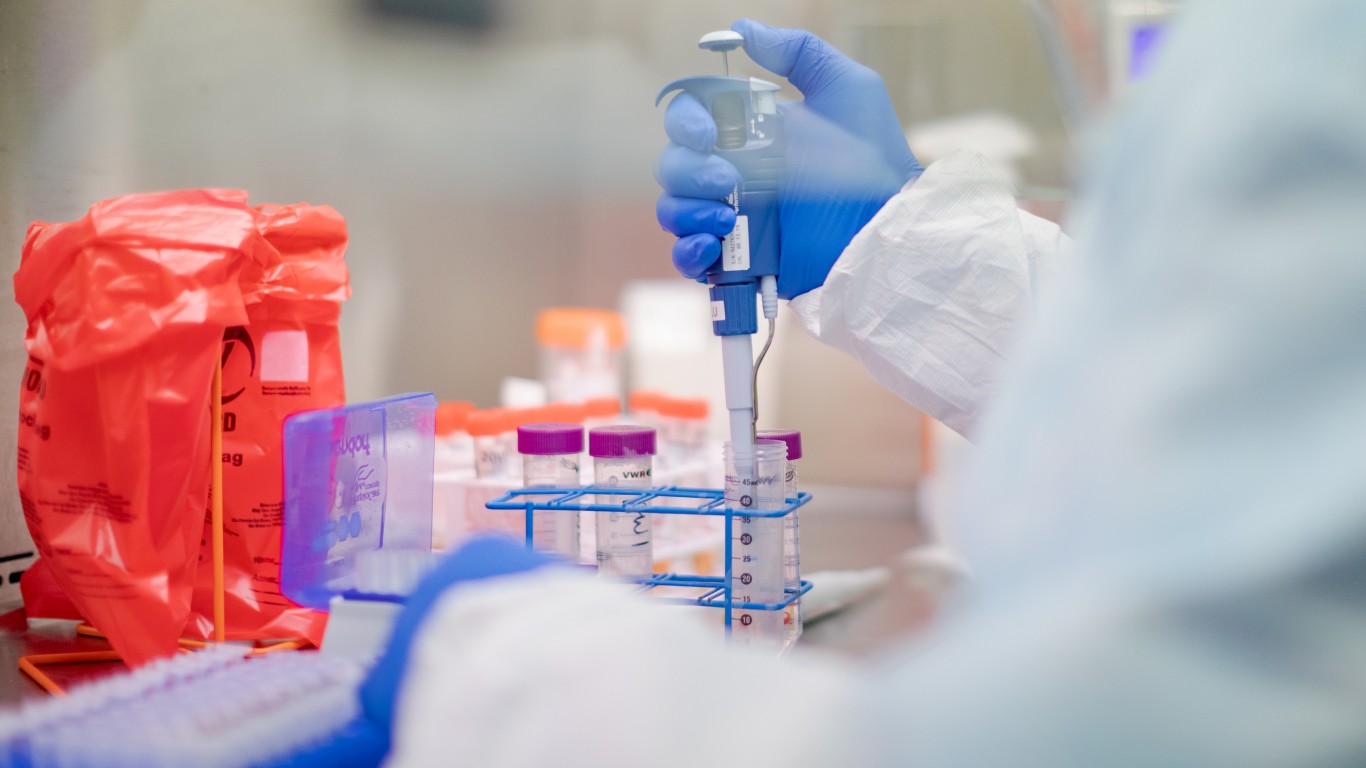 24/7 Wall St.
24/7 Wall St.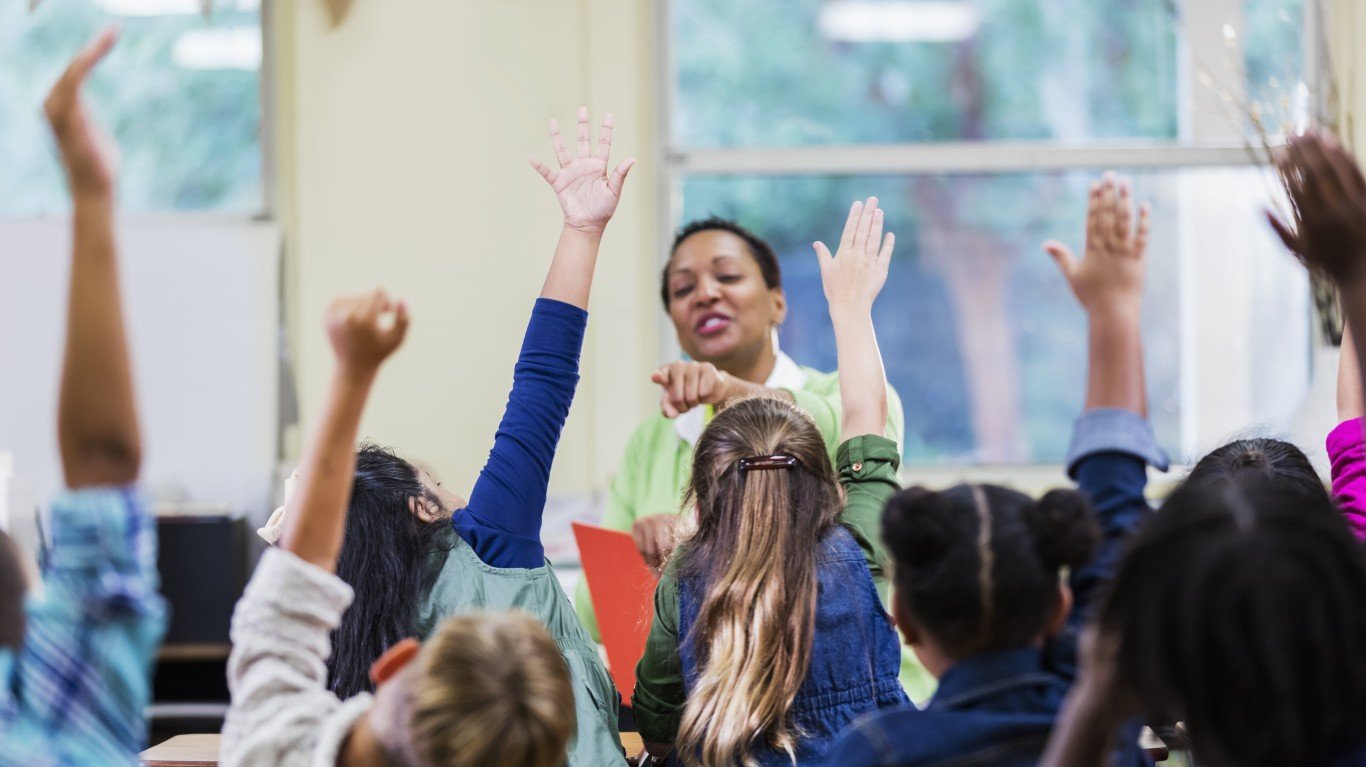 24/7 Wall St.
24/7 Wall St. 24/7 Wall St.
24/7 Wall St.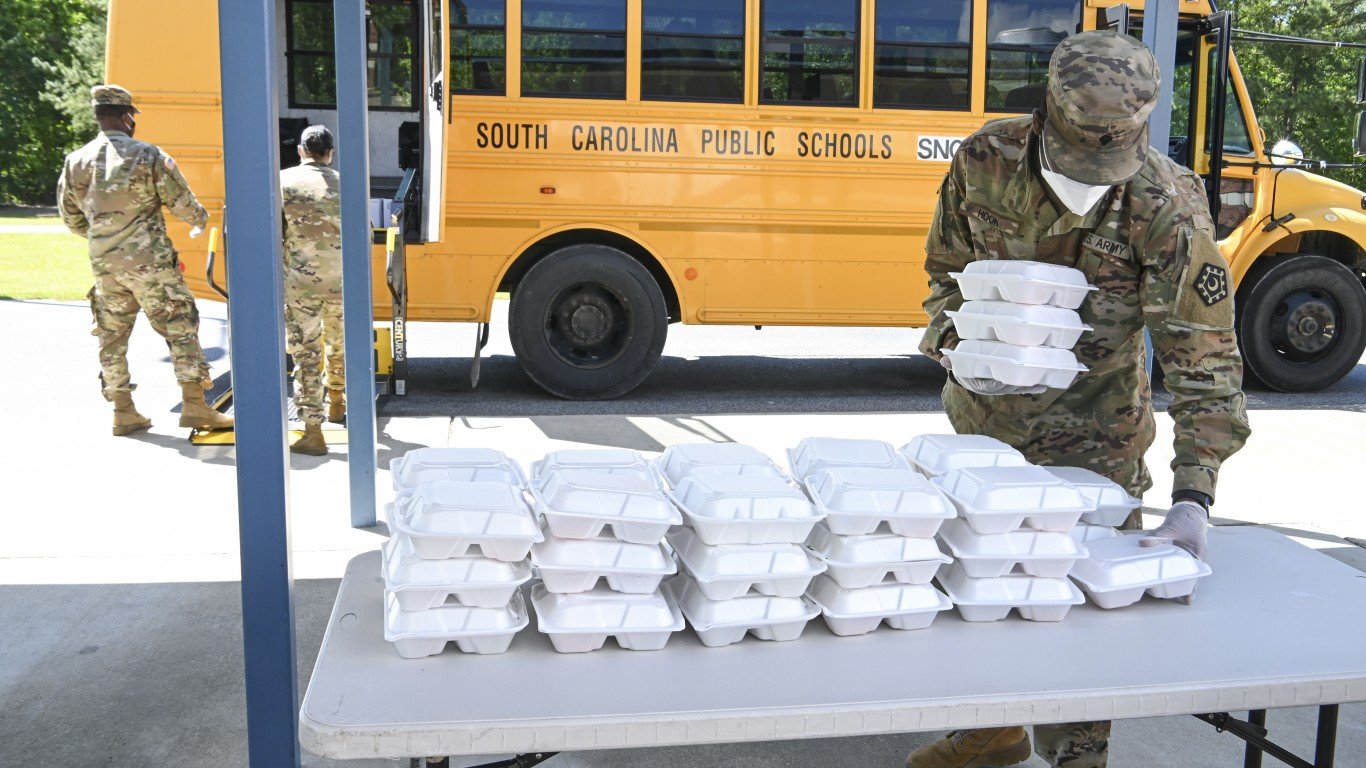
 24/7 Wall St.
24/7 Wall St.


